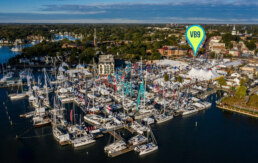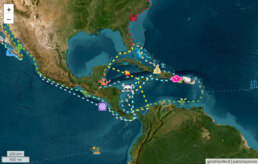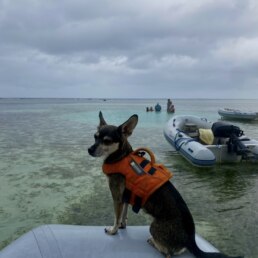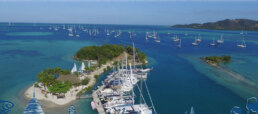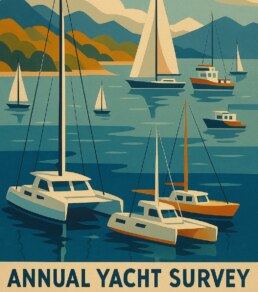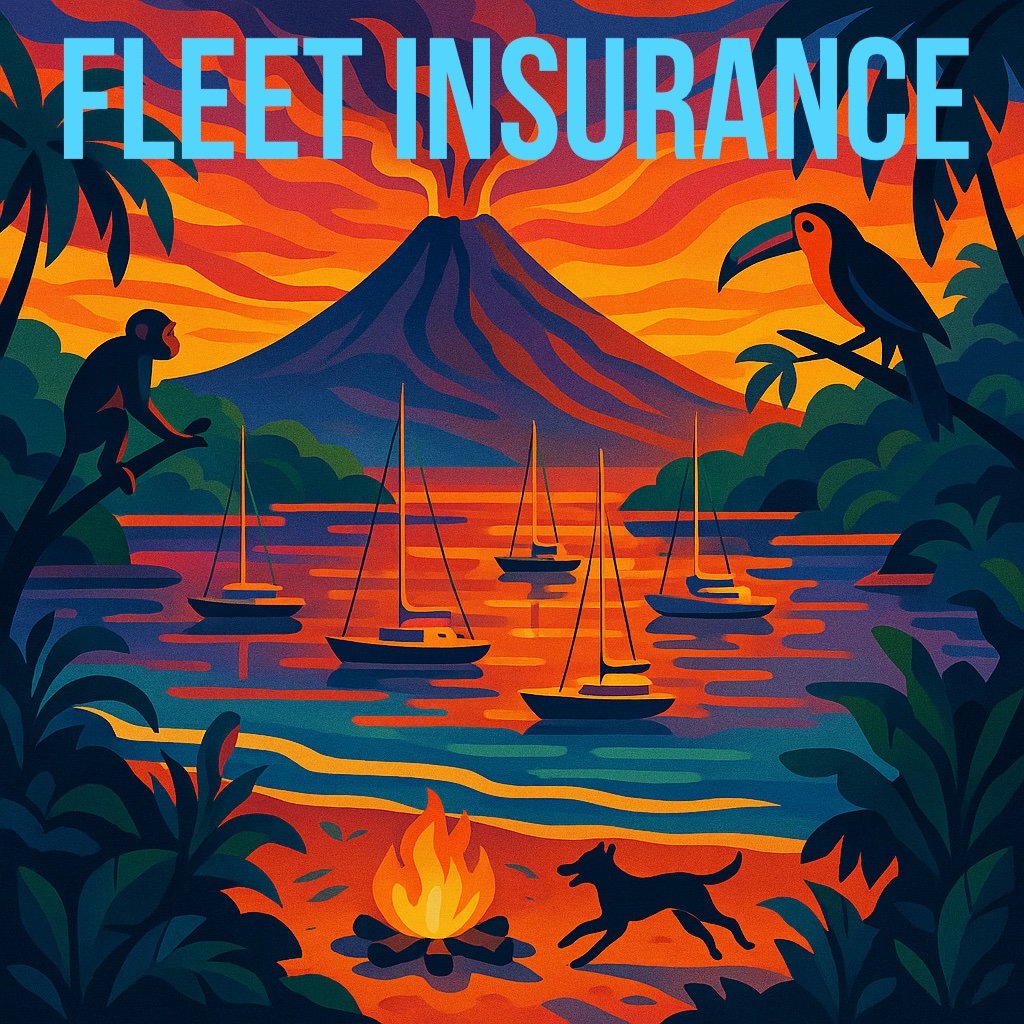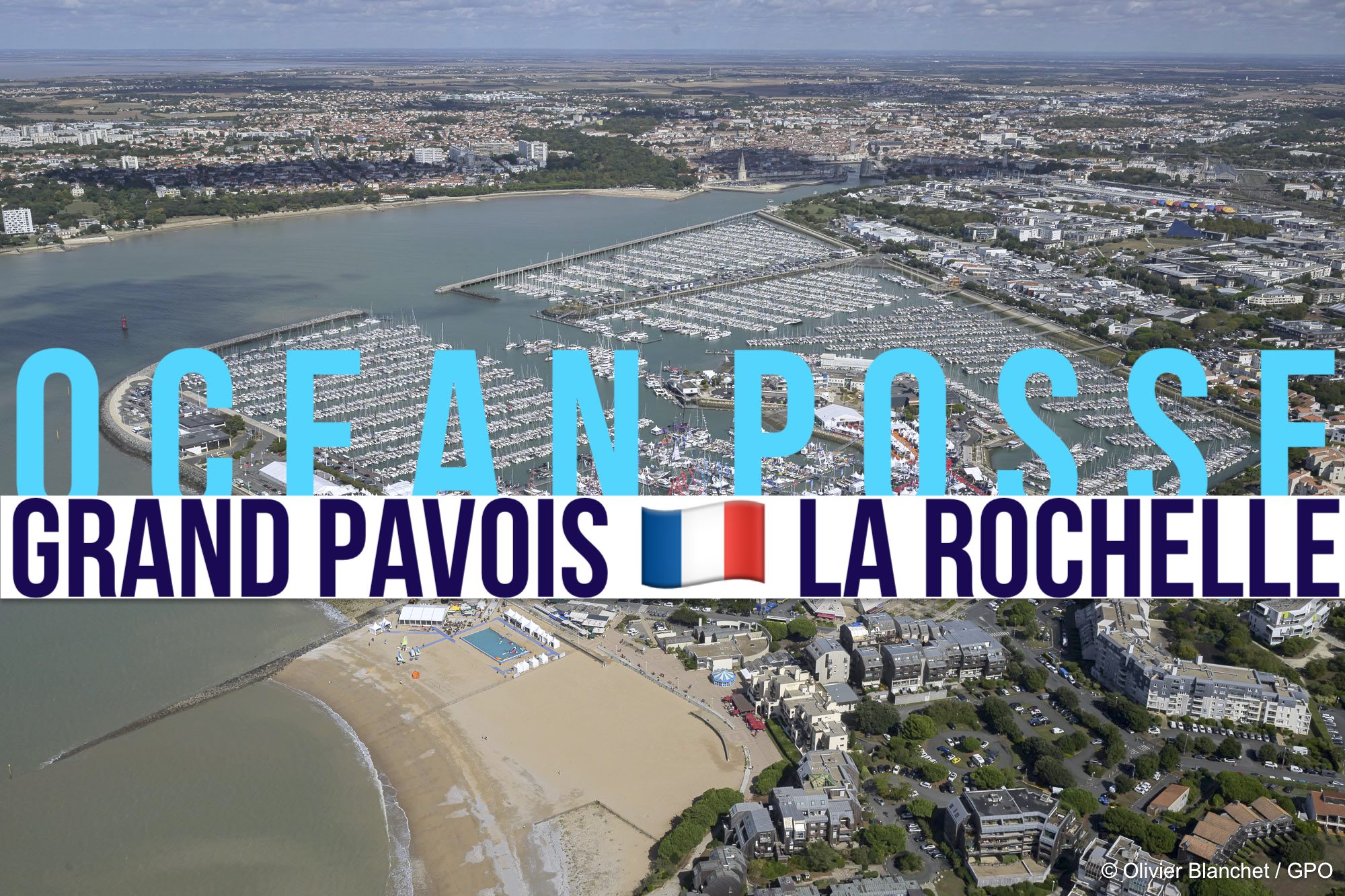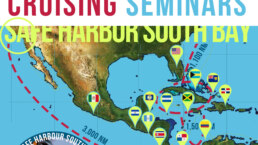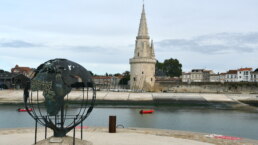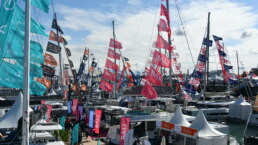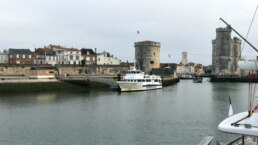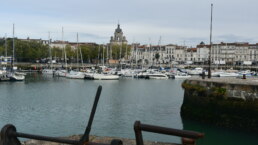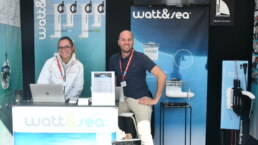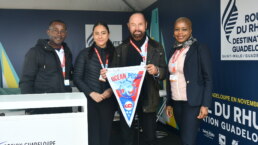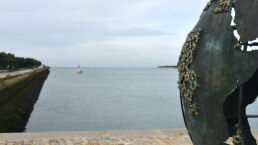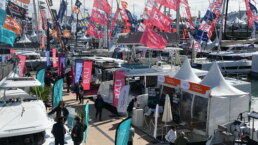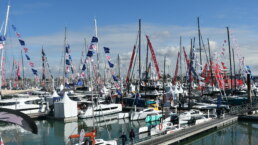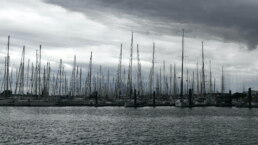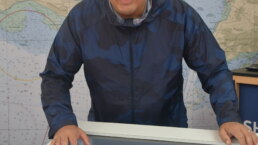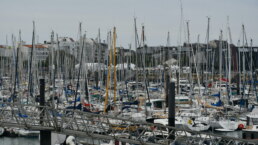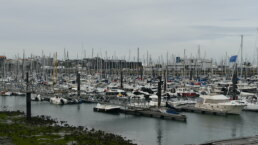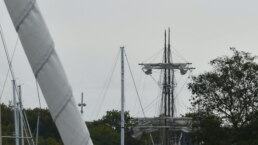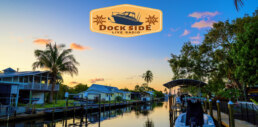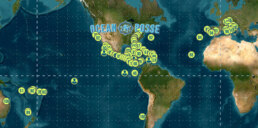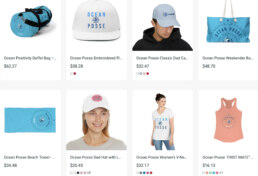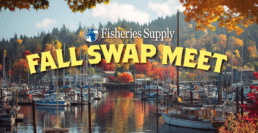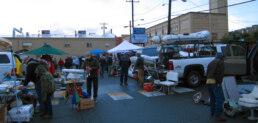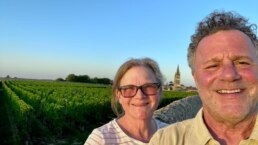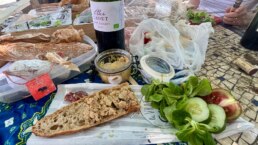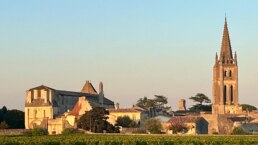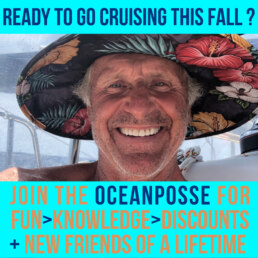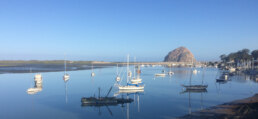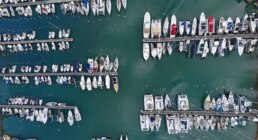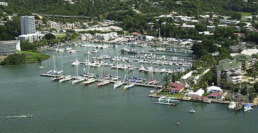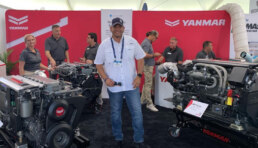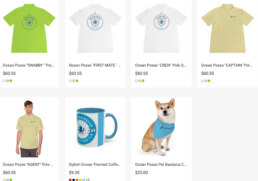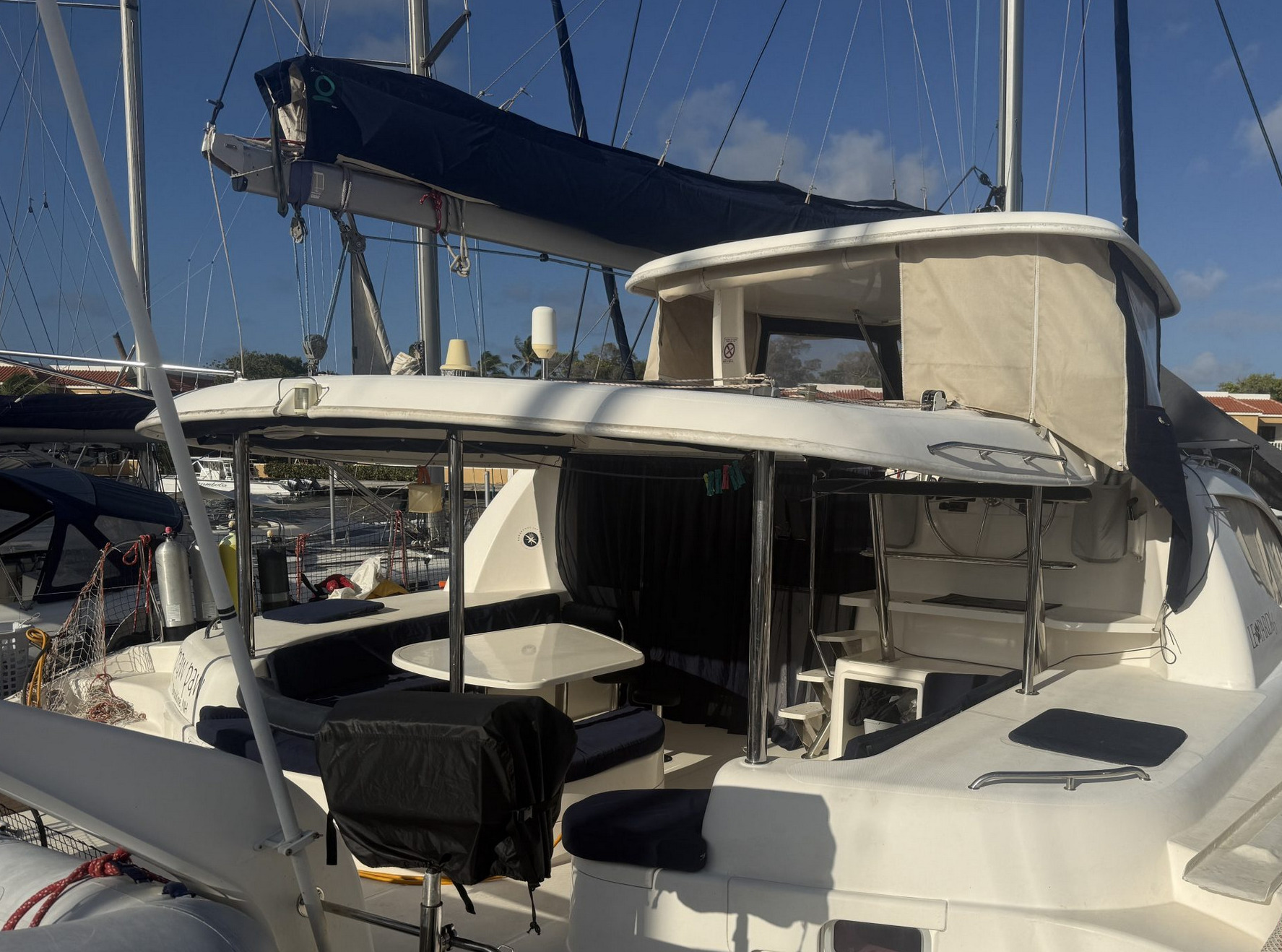CRUISING ° FLEET UPDATE & NEWS 2025-09-28
Throw off the bowlines. Sail away from the safe harbor. Catch the trade winds in your sails. Explore. Dream. Discover.
CRUISING ° FLEET UPDATE & NEWS ⚓ 2025-09-28
Ocean Posse Will Be at the Annapolis 🏛️ Sail Boat Show at Vb9
Pictures of the Week
Ocean Posse ⚓ Route Pods
Meet the Fleet 🇺🇸 Song of the Sea
Musket Cove Marina 🇫🇯 Sponsors the Ocean Posse
3 Weeks Left to for the Annuck Yach Tsurvey
Papagayo Winds 💨
Official Ocean Posse Events
4 Days Cruising Seminars 🇺🇸 San Diego Oct 14 – 17 2025
Must See – Altun Ha 🇧🇿 Belize
Grand Pavoise⛵ La Rochelle 🇫🇷 France
Ocean Posse Sponsors
Media Partners
Ocean Posse Fleet 🛰️ Tracking
Marina Sponsors
Ocean Posse Panama 🇵🇦 Canal Agents
Panama Canal Turbulance
Ocean Posse Merchandise | Made to Order Only
💬 Tidbits
— Fisheries Supply Fall Swap Meet
OCEAN POSSE @ THE ANNAPOLIS 🏛️ SAIL BOAT SHOW AT VB9
This annual celebration of sailing features floating docks lined with sailboats from manufacturers around the world. Multihulls, monohulls, cruisers, racers, sailing dinghies and more. Show tents line the shore, stocked with the latest in nautical gear and accessories, electronics, communication equipment, sails, rigging, education, charter companies, clubs and more. Seasoned and novice sailors alike are invited to expand their horizons and connect with fellow sailors during this internationally acclaimed show. Meet us at VB 09 and pick up your burgee !!!
PICTURES OF THE WEEK
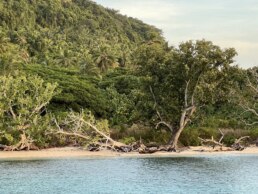
18° 42.8116′ S 174°02.45′ W
Nuku Beach Vava’u 🇹🇴 TONGA

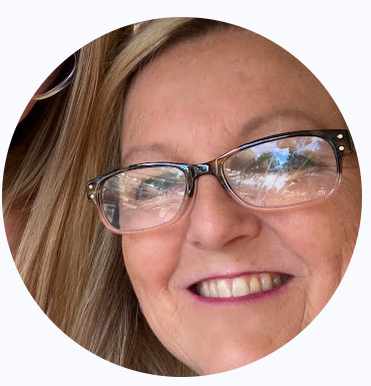
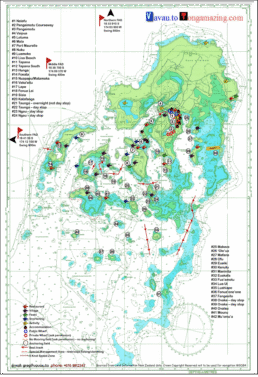
The Vava’u group in northern Tonga is one of the South Pacific’s finest cruising grounds, a maze of over 50 emerald islands and limestone islets ringed by turquoise waters. For sailors, it offers a near-perfect blend of safe anchorages, short passages, and unspoiled beauty. The islands are compactly arranged, meaning most anchorages are only an hour or two apart, yet each feels distinct—ranging from lively village harbors to remote, deserted coves.
Beyond the natural beauty, Vava’u offers cultural warmth. Villagers greet sailors with a smile, and Sunday feasts or kava ceremonies provide authentic encounters with Tongan traditions. With steady trade winds, clear waters, and abundant marine life, the Vava’u islands is a incredible archipelago that rewards those seeking a relaxing environment.
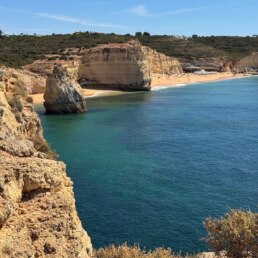
37°06.8016′ N 008°31.275′ W
Praia Grande – Ferragudo, Portugal
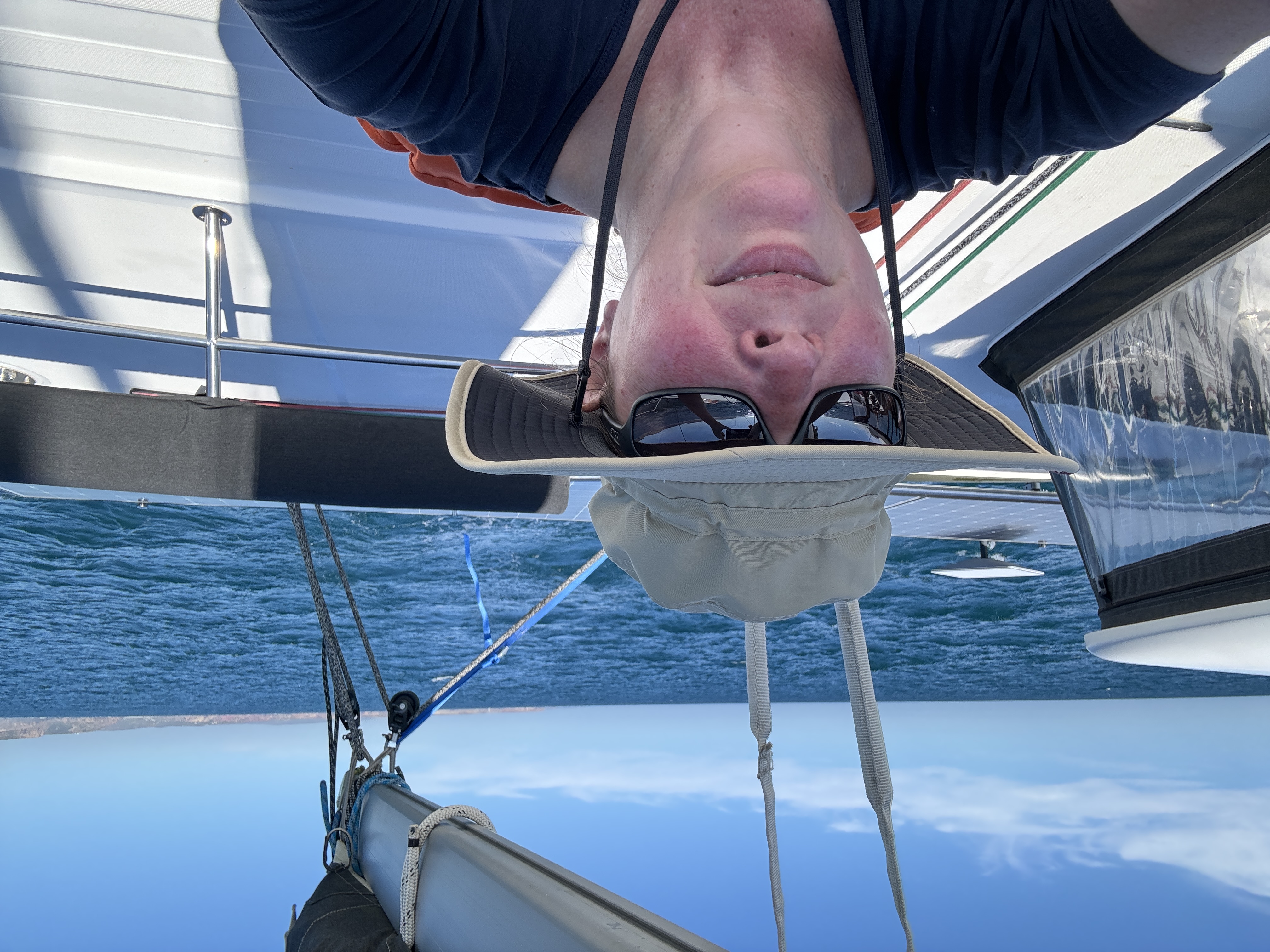
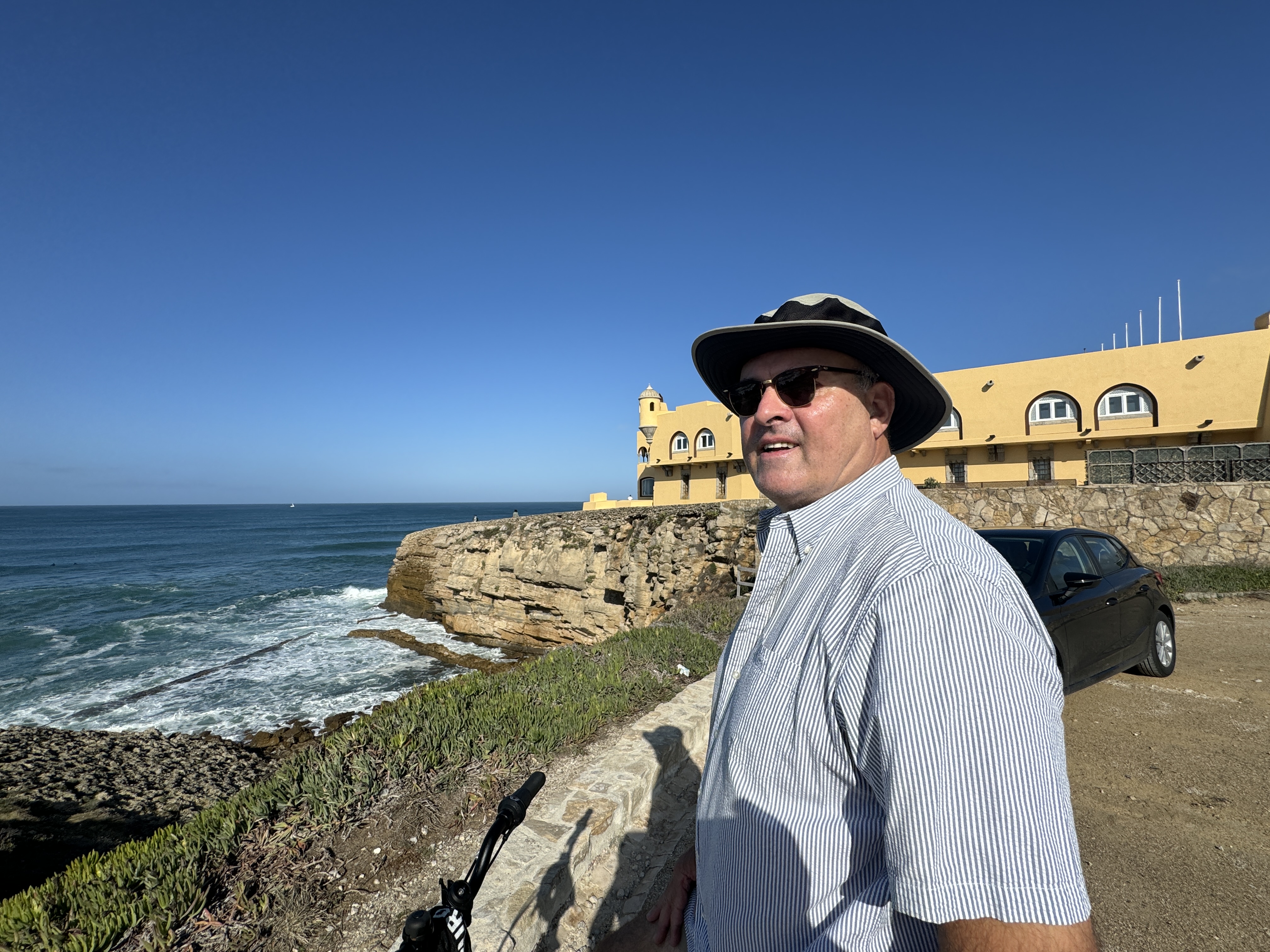
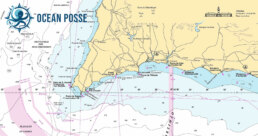
Praia Grande, set at the mouth of the Rio Arade in Ferragudo, Algarve, is a wide golden-sand beach sheltered by breakwaters and overlooked by the medieval Castelo de São João do Arade. Unlike some of the rugged coves along the coast, Praia Grande offers a long, flat stretch of sand, making it ideal for sailors seeking a calm anchorage nearby. The protective jetties create relatively gentle surf, so swimming and paddleboarding are usually safe, while beach cafés and restaurants line the dunes.
For sailors with tenders, Praia Grande makes an inviting landing spot – a place to stretch legs, enjoy a meal, or climb into Ferragudo’s narrow streets for a taste of authentic Algarve life.
THE OCEAN POSSE ⚓ ROUTE PODS
This season it’s time for you to choose your Pods – or mini Posse’s think of them as your route tattoos for your voyage ahead.
Each pod has its own emoji tag so you can mark your cruising plans and spot kindred spirits. If you invent a new route you can pick your own symbol and pod name.
⚓ 👉 Each pod = your Route Tattoo : just drop the emoji in chat to tag yourself and show your season’s cruising vibe.
Extra DIY points for stitching or painting your emoji on this season’s burgee . Your annual membership of $ 349
gives you full support along any of these routes and your membership gives you full access to resources in 50 + maritime areas !
The Ocean Posse is extremely pet friendly – bring your best friend along !
MEET THE FLEET 🇺🇸 SONG OF THE SEA
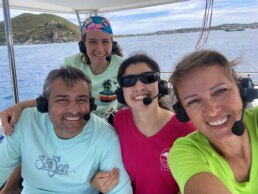
We are currently sailing in Maupiti, French Polynesia. We loved every place we have visited in our journey of 5 years. Grant dreamed of sailing since he was 5. We love being free. Seeing places, meeting people. It is an amazing life.
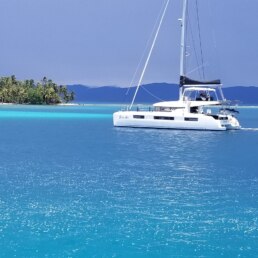
For us this journey is a shared adventure for our family. The time we have spent together, making bonds, are truly unbelievable. One way that changed the way we see the world is that there is a difference now between disaster and inconvenience. We are floating, everybody is healthy – all is good. All else is inconvenience.
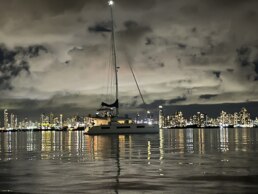
The most unexpected lesson we’ve learned while living and traveling on our vessel is that People are much more alike than we think. We try to visit local churches and make friends and hope to continue on our circumnavigation.
SY SONG OF THE SEA 🇺🇸 Grant, Irina, Aliona and Anastasia – Lagoon 49′
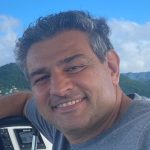
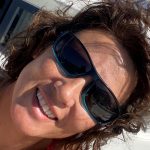
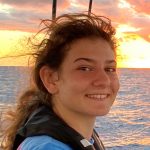
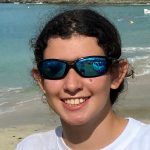
- TikTok: G Family SuiteLifeOnSongOftheSea
- Instagram: Songofthesea2020
- Facebook: Song of the Sea Public Group
- Youtube: @GFamily_SongoftheSea
MUSKET COVE MARINA 🇫🇯 SPONSORS THE OCEAN POSSE
We welcome any of the South Pacific Posse to Musket Cove at any time.
We’re pleased to offer a Free Berthing Day for 5 Paid Days to all of your Posse Members.

AMENITIES
At Musket Cove you’ll find the pace of life smooth and unhurried. The resort is owned
and operated by Fiji’s oldest resort company, with 400 acres of palm fringed beaches
and tropical gardens. You will be hosted by 150 extremely warm and dedicated staff,
who will endeavour to ensure your visit is one to cherish. Take a moment to familarize yourself
with the following;
No animals are allowed on shore.
We care for our environment so please help with careful disposal of waste water, pollutants
and rubbish. Rubbish bins are located behind the Marina Office.
Charge It! Yacht visitors are welcome to open an account at the Marina office for all
transactions. Including, the
- Trader General Store
- Dick’s Place Bistro & Bar
- Trade Cafe
- Island Bar
- Dive Shop
- Fuel
Marine Sanctuary: All waters in and around Musket Cove, including moorings are a Marine
Sanctuary with all fishing prohibited.
The Trader General Store is open daily between 8am -7pm.
Laundry – token operated washing
machines and dryers is located in the ablutions building opposite the Trader Cafe. Tokens can be
purchased from the Trader General Store.
Musket Cove Yacht Club Island Bar: The iconic Island Bar is a great meeting place. With coin
operated BBQ’s available.
Open 10am till late. BBQ Packs can be purchased at the Trader Cafe
Bottle Shop: Bulk discount Beer, Wine & Sprits can be purchased from Dicks Place Bar between
the hours of 9am till 11am & 3pm to 5pm
Dick’s Place Bistro & Bar: Open daily Breakfast:7.00am – 1100am, Lunch: 11.30am –2.00pm,
Dinner: 7pm – 9pm. Daily a la carte and check out our famous Theme night buffets. Reservations
required.
Swimming Pool: You are welcome to use the pool, excluding Regatta Week. Resort guests
have priority on sun lounges. Lounge and restaurant area is for wining and dining only. Please do
not use these areas to place your belongings. You must follow the pool rules.
Makare Spa: Our dedicated spa offers a full range of beauty and relaxation treatments. The Spa
is open daily from 8am to 5pm.
Scuba Diving: Subsurface Fiji specializes in making diving fun for all. They offer a full range of
PADI Scuba Diving. Check out Fiji’s famous and fantastic dive spots, day trips departing daily
from Musket Cove Marina.
Ducks & Dingies: Please tie up at the end of the marina towards the MCYC Island Bar so that
they are not in the way of vessels berthed at the Marina.
Drinking Water: Available at the Marina for 10 cents per liter.
Mail: Incoming mail is kept at the Marina Office. The outgoing mail bag is in the
boutique where stamps are available
Malolo Cat: The Malolo Cat operates 4 times daily. Purchase tickets at the resorts front
office and be ready for boarding 30 minutes prior to departure
WIFI: Paid WIFI is available throughout the resort and MCYC Island Bar via Tomizone
and can be purchased from Front office and the Trader General Store
Note: Musket Cove is a functioning resort and all visitors must respect the comfort of all. Shirts
and appropriate clothing must be worn in public areas and children must be accompanied and
well behaved. Poor or disrespectful behaviour will not be tolerated and Management reserve
the right to deny service for infringements deemed unacceptable
RATES
MARINA BERTHING
DAILY BERTHING RATE
F$4.80 PER METRE MONOHULLS
F$8.50 PER METRE MULTIHULLS
PLEASE ENQUIRE FOR MONTHLY AND LONG TERM BERTHING RATES
SWING MOORINGS – VESSELS UPTO 25 TONS
F$25.00 PER NIGHT
PAID IN ADVANCE & NON-REFUNDABLE
Rates expressed in Fiji Dollars and Include VAT.

SAFE APPROACH TO MUSKET COVE MARINA
LOCATION
only 3 weeks left for a chance to win $250
TAKE THE Annual Ocean Posse Survey ⚓️
Ahoy Captains and Crew,There’s nothing quite like a good survey to get your day started – a little honesty, a little embarrassment, and a whole lot of truth. We’re excited (yes, really excited) to hear what you really think.
This is your chance to weigh in – anonymously – and help shape the course of the Ocean Posse fleet. No names, no judgments, just your salty insights.Grab a coffee, drop anchor, and take a few minutes to fill it out. 👉
We’re counting on you – and there might just be a $250 prize at the end of your honesty.Stay informed, The Ocean Posse Team
PAPAGAYO WINDS 💨
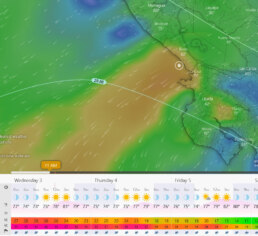
The Papagayo winds are powerful seasonal gusts that sweep across Central America, most notably through Nicaragua and Costa Rica, where low mountain passes funnel trade winds from the Caribbean toward the Pacific. These winds occur mainly from November through March, often reaching gale force and creating rough seas in the Gulf of Papagayo. For sailors, they pose both challenge and opportunity: demanding careful timing and seamanship, but also offering swift passages when managed properly. Local fishermen and mariners have long adapted to their rhythm, and cruising yachts must prepare with secure anchoring, reefed sails, and vigilant weather routing when transiting.
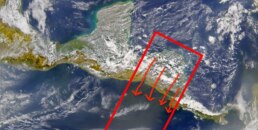
The Papagayo Winds are strong, seasonal winds that blow across the Pacific Ocean near Central America, particularly off the coasts of Nicaragua and Costa Rica. These winds can significantly affect sailors in the region, especially those traveling near the Gulf of Papagayo.
What Causes Papagayo Winds?
The winds are caused by a combination of:
- Pressure Differences: High-pressure systems over the Caribbean and low-pressure systems over the Pacific create a pressure gradient, funneling winds through gaps in the Central American mountain ranges, particularly around Lake Nicaragua.
- Topography: The gap between the mountains accelerates the winds, sometimes reaching gale force.
- Seasonality: Papagayo winds are most common during the dry season (December to April), coinciding with the northeast trade winds.
Characteristics of Papagayo Winds
- Strength: Winds can reach 20-50 knots, with occasional gusts exceeding 60 knots.
- Duration: They can last for hours or days, creating rough seas with steep, short-period waves.
- Direction: Typically blow from the northeast to the northwest, affecting coastal waters and up to 300 miles offshore.
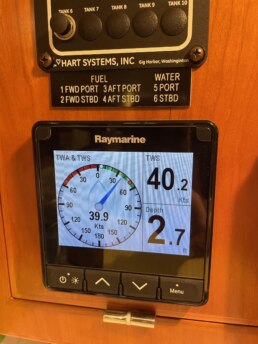
You’ll have a chance to enter in the highest wind recorded award – just snap a picture of the wind gusts experience .
How to Deal with Papagayo Winds
1. Planning
- Monitor Forecasts: Use reliable marine weather services to anticipate wind and wave conditions. The Gulf of Papagayo is a known hotspot, so check regional forecasts regularly – look for gusts forecasts (not wind) forcasts GFS / PWE .
- Seasonal Awareness: If possible, time your passage outside the peak wind season (April- May- November early December is typically calmer but you can encounter thunderstorms higher CAPE index and squalls).
2. Timing
- Sail Early: Winds are often strongest in the afternoon. Plan to sail in the early morning when they are likely to be weaker.
- Wait It Out: If winds are exceptionally strong, consider delaying your passage until conditions improve. Anchor with plenty of scope and recover.
3. Navigation
- HUG the Coast: If conditions permit, keep as minum a safe distance from the coastline to avoid the square waves of the wind acceleration near land.
- Seek Shelter: Anchor in protected bays or marinas. The Gulf of Papagayo and the coast of Nicaragua has some anchorage where you can anchor but be prepared to deal with 35+ knots
4. Adjust Your Sailing
- Reef : double ripple reefed mains Reduce sail area before the winds pick up to maintain better control
- Pointing: Sail at an angle to the wind to minimize the pounding from waves.
- Balance the Load: Properly trim your sails and adjust weight distribution to improve stability.
5. Safety Precautions
- Secure Gear: Ensure all loose items are stowed, as rough seas can toss unsecured items around.
- Crew Preparedness: Keep your crew briefed and equipped with safety gear, including harnesses and life jackets.
- Engine Check: Be ready to motor if necessary, as high winds and waves may require additional power.
6. Resources
- Look at the WIndgusts forecats these winds are gusts and will blow 70 % of the time – gusts +10knots is what you can plan for
- Apps and Tools: Use wind forecasting tools like PredictWind NOAA or WIndy
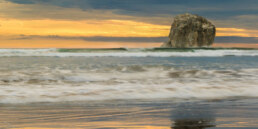
Witches rock is a Pacific Coast Costa Rica surf spot easily reachable from Marina Papagayo
OFFICIAL OCEAN POSSE EVENTS
OCEAN POSSE KICK OFF 🇲🇽 BARRA DE NAVIDAD, MEXICO December 3-7 2025
MARINA PUERTO DE LA NAVIDAD, BARRA DE NAVIDAD, MEXICO
OCEAN POSSE & BEN TAYLOR STREET PARTY @ CANNES 🇫🇷 YACHTING FESTIVAL
TAQUERIA LUPITA, 72 Rue Meynadier, Cannes
GRAND PAVOIS 🇫🇷 La Rochelle – Sep. 24 2025
Gran Pavois La Rochelle, 20 Av. de la Capitainerie, 17000 La Rochelle, France
OCEAN POSSE 🇺🇸 SAN DIEGO BAY 4 DAY CRUISING SEMINARS SERIES @ SAFE HARBOR SOUTH BAY
SAFE HARBOR SOUTH BAY EVENT CENTER, CHULA VISTA, SAN DIEGO, CA
GRAND PAVOIS 🇫🇷 La Rochelle – Sep. 24 2025
Gran Pavois La Rochelle, 20 Av. de la Capitainerie, 17000 La Rochelle, France
GRAND PAVOIS 🇫🇷 La Rochelle – Sep. 24 2025
Gran Pavois La Rochelle, 20 Av. de la Capitainerie, 17000 La Rochelle, France
GRAND PAVOIS 🇫🇷 La Rochelle – Sep. 24 2025
Gran Pavois La Rochelle, 20 Av. de la Capitainerie, 17000 La Rochelle, France
GRAND PAVOIS 🇫🇷 La Rochelle – Sep. 24 2025
Gran Pavois La Rochelle, 20 Av. de la Capitainerie, 17000 La Rochelle, France
GRAND PAVOIS 🇫🇷 La Rochelle – Sep. 24 2025
Gran Pavois La Rochelle, 20 Av. de la Capitainerie, 17000 La Rochelle, France
REMINDER 4 DAYS OF CRUISING SEMINARS 🇺🇸 SAN DIEGO Oct 14 – 17 2025
RESERVE YOUR SEAT TODAY >>
OCEAN POSSE KICK OFF EVENT 🇺🇸 4 DAYS | CRUISING SEMINARS SERIES
SAN DIEGO BAY @ SAFE HARBOR SOUTH BAY ° EVENT CENTER
$ 50 per person x day – FREE FOR OCEAN POSSE PARTICIPANTS
SCHEDULE:
Tuesday OCTOBER 14th , 2025 ● SEMINARS
10:00
Communications onboard, underway and on shore

11:00
The fundamentals of wires, connectors and fuses

12:00 – 14:00 WORKING LUNCH BREAK ORDER from UBER EATS ETC
13:00
Diesel Engines & Generators and preventative Maintenance

14:00
Rigging 101 Standing and Running
15:00
Weather Weather Weather – planning – routing – underway

16:00
Crew the good the bad and the ugly

17:00
Cruising down Pacific Mexico CHECKING IN AND OUT

WEDNESDAY OCTOBER 15th, 2025 ● SEMINARS
09:00
South Pacific – French Polynesia – Cook Islands – Tonga & Fiji

10:00
Safety Security and Emergencies outside the US and what to expect

11:00
Electrical Systems – Batteries, Chargers, Alternators, Solar Panels
12:00 – 14:00 LUNCH BREAK
14:00
Where and how to repair boats outside the US
15:00
The tropics – Refrigeration, AC, Shading, Airflow + other ways to stay cool

16:00
ANCHORING

17:00
Destination Costa Rica and Nicaragua

THURSDAY OCTOBER 16th, 2025
09:00
Destination Belize & Rio Dulce Guatemala

10:00 – 12.00 presented by rich boren
Water, Water Makers + Plumbing in Paradise

12:00 -14:00 LUNCH BREAK
14:00
Chart Accuracy, Navigation Trips and Tricks
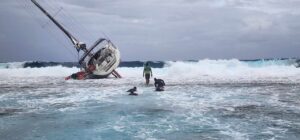
15:00
Provisioning, Propane and Fuel – where to replenish
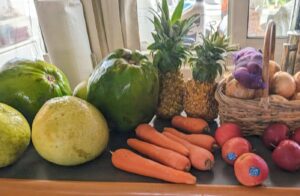
16:00
YACHT INSURANCE
17:00
Destination Colombia, Jamaica & Bay of Islands Honduras

FRIDAY OCTOBER 17th, 2025
10:00
Cruising in Panama + the Panama Canal

11:00
Open CPN – Satellite Charts – Use Cases and Satellite Chart creation

12:00 -14:00 LUNCH BREAK
14:00
OCEAN CROSSING PACIFC

15:00
SAFETY AND SECURITY

16:00
CREW – THE GOOD THE BAD AND THE UGLY
17:00 – 21:00
PPPPARTY RUM & MUSIC

RSVP HERE
DIRECTIONS
FOOD – you will be able to order food delivered to you from uber eats and doordash – we’ll have water – coffee and some snacks – bring notepads – computers and your sense of adventure
Our entire team welcomes you and looks forward to your visit.
As your OCEAN POSSE PARTICIPANTS plan ahead, they will be working with them.
Our best contact is by email, tdeyoung@shmarinas.com
Business Mgr.
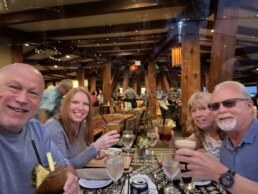
Meet the fleet and get all your gear before heading south from California – with additional gatherings at local San Diego hang outs’
MUST SEE – Altun Ha 🇧🇿 BELIZE
Altun Ha is a rich, major ceremonial center occupied during the Classic Mayan period. The true name of the city is unknown. The name “Altun Ha”, literally means “rockstone water” is a rough translation of the name of a nearby village.
 It was an mayor link in the coastal trade routes, and had contact with Teotihuacan at an early time in Maya history.
It was an mayor link in the coastal trade routes, and had contact with Teotihuacan at an early time in Maya history.
Mounds covered by trees and vines, the remains of what was once a great city, spread out over more than 25 square miles at Altun Ha. Excavations have been concentrated in the central part of the city, with 275 structures in an area about of about one thousand yards square.

EARLY ALTUN HA
Altun Ha was settled long before the Classic Mayan as many as 2,000 years ago. For a Mayan City, the site is unusual. The soil is thin which may indicate that it was a traiding center rather than anagricultural community

Thirteen structures surround two main plazas at the site. The two tallest temples, Temple of the Sun God (the structure depicted on Belikin beer bottles) and Temple of the Masonry ALtars, rise 60 feet above the grassy plaza floor. Altun Ha covers an area of about 5 square miles and includes an extensive swamp north of the plazas. It’s believed that up to 10,000 people lived here during the Classic period of Maya civilizatin, as late as A.D. 1000.

Perhpas Altun Ha’s most famous Pendergast’s discovery of a huge jade headed replica of Kinich Ahau, the Sun God, in 600 and was owned by an elderly priest. At the time of its discovery, this priceless relic was the largest of its type ever recorded in the Maya world – almost 6 inches tall and weighing nearly 10 pounds. On rare occasions this Kinich Ahau repllica is taken on exhibition tours.

LOCATION
GRAND PAVOISE⛵ LA ROCHELLE 🇫🇷 FRANCE
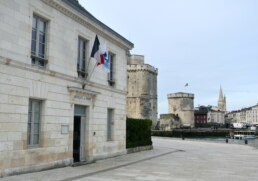
Stepping into La Rochelle during the Grand Pavois Boat Show is like entering a centuries old harbor of a vast maritime ecosystem. With more than 2,300 local marine businesses intertwined here, the scale of the industry immediately strikes you. It’s not just a boat show – it’s a living showcase of the craftsmanship, innovation, and tradition that sustains one of Europe’s strongest nautical economies.
Every quay was lined with vessels of every stripe – sleek catamarans, rugged offshore cruisers, nimble daysailers, and cutting-edge tenders. Walking the docks, you could feel the pulse of the industry: shipwrights, sailmakers, riggers, marine electronics experts, chandlers, and service providers, all proud to present their work. The sheer density of marine know-how on display was staggering, a reminder of how many livelihoods and communities are tied to the sea.
La Rochelle itself adds depth to the experience. The old port, with its medieval towers and cobbled streets, reminds visitors that this has been a seafarers’ hub for centuries – a place where explorers once provisioned before setting out for the New World. Today, the town blends that historic charm with modern energy, creating a backdrop that makes the Grand Pavois feel both timeless and forward-looking.
The following boat builders are operating out of La Rochelle with serveral others nearby: Fountaine Pajot, Dufour, Neel Trimarans and Amel Yachts.
For me it was inspiring to see how this historic harbor thrives, not only as a historic gateway but also as a modern powerhouse of maritime industry. They even ran an electric cat ferry back and forth to town reducing the 25 minute walk to a fun boat-ride to the boat show. The Grand Pavois is a living reminder of the strength and spirit of our seafaring world. Mid week visitor numbers and attendance “felt” down as they do at most boat shows these days but the energy and spirit of La Rochelle is remarkable nonetheless.
— Captain Dietmar
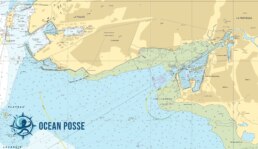
OCEAN POSSE SPONSORS
- ABERNATHY – PANAMA
- BELIZE TOURISM BOARD
- BOAT HOW TO
- CABRALES BOAT YARD
- CENTENARIO CONSULTING – PANAMA CANAL
- CHRIS PARKER – MARINE WEATHER CENTER
- DELTA MIKE MARINE SUPPLY PANAMA
- DIGITAL YACHT
- DOWNWIND MARINE
- EL JOBO DIST. COSTA RICA
- FLOR DE CAÑA
- HAKIM MARINA AND BOAT YARD
- HERTZ RENTAL CARS MEXICO
- HOME DEPOT PRO MEXICO
- LATITUDES AND ATTITUDES
- MARINA PAPAGAYO
- NOVAMAR YACHT INSURANCE
- PANAMA YACHT BROKER
- PREDICT WIND
- SAFE HARBOR SOUTH BAY MARINA EVENT CENTER
- SAN DIEGO MARINE EXCHANGE
- SAFETY ONBOARD COSTA RICA
- SEVENSTAR YACHT TRANSPORT
- SHAFT SHARK
- SUN POWERED YACHTS
- WESTMARINE PRO
- YACHT AGENTS GALAPAGOS
OUR 📻 New Media Partner: Dockside Live Radio
We’re pleased to welcome Dockside Live Radio as an official media partner of the Ocean Posse Fleet.
Led by lifelong boater Brian Burns, Dockside Live brings music, stories, and conversations from the waterfront directly to the airwaves. Brian grew up on the lakes of Wisconsin and later sailed a 28’ O’Day before dedicating himself fully to radio. His program reaches boaters across the U.S. and beyond — with the motto:
“Where the music meets the water…”
Stay tuned — LISTEN at DockSideLive.com or download from your favorite App Store.
📡 Dockside Live Radio >>>

OCEAN POSSE FLEET 🛰️ TRACKING
SPONSORED BY PREDICT WIND
MARINA SPONSORS
🇦🇺 AUSTRALIA
🇧🇸 BAHAMAS
-
 Browns Marina
Browns Marina -
 Elizabeth on the Bay Marina
Elizabeth on the Bay Marina -
 Blue Marlin Cove Resort & Marina
Blue Marlin Cove Resort & Marina -
 Great Harbour Cay Marina
Great Harbour Cay Marina -
 Romora Bay Resort and Marina
Romora Bay Resort and Marina
🇧🇿 BELIZE
🇧🇲 BERMUDA
🇧🇷 BRAZIL
 Stella Marina
Stella Marina  Recife Marina
Recife Marina  Pier 26 Marina
Pier 26 Marina
 Marina da Gloria
Marina da Gloria Marina da Gloria
Marina da Gloria Marina Bracuhy
Marina Bracuhy Marina Piratas
Marina Piratas
🇻🇬 BRITISH VIRGIN ISLANDS
🇨🇻 CAPE VERDE
🇰🇾 CAYMAN ISLANDS
🇨🇱 CHILE
🇨🇴 COLOMBIA – Caribbean
-
 Club Nautico Cartagena
Club Nautico Cartagena -
 Club de Pesca Marina Cartagena
Club de Pesca Marina Cartagena -
 Marina Puerto Velero
Marina Puerto Velero -
 IGY Marina Santa Marta
IGY Marina Santa Marta  Manzanillo Marina Club
Manzanillo Marina Club
🇨🇷 COSTA RICA – Pacific Coast
🇨🇺 CUBA
🇩🇲 DOMINICA
🇩🇴 DOMINICAN REPUBLIC
🇪🇨 ECUADOR
🇸🇻 EL SALVADOR
🇬🇮 GIBRALTAR
🇬🇩 GRENADA
🇬🇵 GUADELOUPE
🇬🇹 GUATEMALA – Pacific Coast
🇬🇹 GUATEMALA Rio Dulce
🇫🇯 FIJI
 Copra Shed Marina
Copra Shed Marina Nawi Island Marina
Nawi Island Marina  Denarau Marina
Denarau Marina-
 Musket Cove
Musket Cove  Royal Suva Yacht Club
Royal Suva Yacht Club Sau Bay Moorings
Sau Bay Moorings
🇭🇳 HONDURAS – Bay of Islands – Roatan
🇮🇹 ITALY
 Marina dei Presidi
Marina dei Presidi  Marina di Balestrate
Marina di Balestrate Marina di Brindisi
Marina di Brindisi Marina di Cagliari
Marina di Cagliari Marina di Chiavari
Marina di Chiavari Marina di Forio
Marina di Forio  Marina di Teulada
Marina di Teulada -
 Marina di Policoro
Marina di Policoro -
 Marina di Vieste
Marina di Vieste -
 Marina de Procida
Marina de Procida -
 Marina de Villasimius
Marina de Villasimius -
 Marina di Vieste
Marina di Vieste -
 Marina Molo Vecchio
Marina Molo Vecchio  Marina Salina
Marina Salina  Venezia Certosa Marina
Venezia Certosa Marina
🇯🇲 JAMAICA
🇲🇶 MARTINQUE
🇲🇽 MEXICO – Caribbean
- Marina Makax – Isla Mujeres
- Marina Puerto Aventuras
- Marina V&V – Quintana Roo
- Marina El Cid – Cancún
🇲🇽 MEXICO – Pacific Coast
- ECV Marina – Ensenada BC
- IGY Marina Cabo San Lucas BCS
- Marina Palmira Topolobampo – SI
- Marina y Club de Yates Isla Cortes – SI
- Marina el Cid – Mazatlan – SI
- Marina Vallarta, Puerto Vallarta – JA
- Marina Puerto de La Navidad – Barra de Navidad – CL
- Marina Ixtapa, Ixtapa – GE
- La Marina Acapulco, Acapulco – GE
- Vicente’s Moorings, Acapulco – GE
- Marina Chiapas – CS
🇳🇿 NEW ZEALAND
🇳🇮 NICARAGUA – Pacific Coast
🇳🇺 NIUE
🇵🇦 PANAMA – Pacific Coast
🇵🇦 PANAMA – Caribbean
- Shelter Bay Marina
- Bocas Marina
- Solarte Marina
- Linton Bay Marina /a>
- Turtle Cay Marina
- IGY Red Frog Marina
🇵🇹 PORTUGAL
🇵🇷 PUERTO RICO
🇱🇨 SAINT LUCIA
🇸🇽 SINT MAARTEN
🇪🇸 SPAIN
 Alcaidesa Marina
Alcaidesa Marina  IGY Málaga Marina
IGY Málaga Marina  Marina Del Odiel
Marina Del Odiel  Nautica Tarragona
Nautica Tarragona  Puerto Sotogrande
Puerto Sotogrande Yacht Port Cartagena
Yacht Port Cartagena
🇰🇳 ST KITTS & NEVIS
🇹🇳 TUNISIA
🇹🇴 TONGA
🇹🇨 TURCS AND CAICOS
🇻🇮 US VIRGIN ISLANDS
🇺🇸 USA – East Coast
- Safe Harbor – Marathon, FL
- Pier 66 Hotel & Marina – Ft. Lauderdale, FL
- Titusville Marina – FL
- Port 32 Marina Jacksonville – FL
- Oasis Marinas at Fernandina Harbor Marina – FL
- Morningstar Marinas Golden Isles St. Simons Isl. – GA
- Windmill Harbour Marina – Hilton Head , SC
- Coffee Bluff Marina – Savannah GA
- Hazzard Marine – Gerogetown, NC
- Holden Beach – Town Dock, NC
- Tideawater Yacht Marina, Portsmouth, VA
- Ocean Yacht Marina, Portsmouth, VA
- York River Yacht Haven – VA
- Yorktown Riverwalk Landing – VA
- Regatta Point Marina – Deltaville, VA
- Regent Point Marina – Topping, VA
🇺🇸 USA – Pacific Coast
🇻🇺 VANUATU
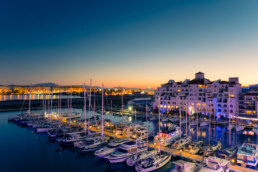
OCEAN POSSE PANAMA 🇵🇦 CANAL AGENTS
info@centenarioconsulting.com
www.centenarioconsulting.com
Cellphone +507 6676-1376
WhatsApp +507 6676-1376

PANAMA CANAL Prop wash is the powerful stream of water pushed aft by large vessels’ propellers when maneuvering.
In the Panama Canal, container ships, tankers, and cruise ships often run massive multi-blade props designed to move thousands of tons of displacement.
Even when these ships are moving at low speed, their prop wash creates strong turbulence and suction that can affect yachts nearby.
Why It Matters
Lock turbulence – In the locks, a yacht may be positioned directly astern of a massive ship. When that ship uses its engines to adjust position, the resulting wash can slam a yacht against the chamber wall or strain the mooring lines.
Side suction – Prop wash interacts with canal walls, creating back-eddies and side suction. A small yacht may suddenly be pulled toward the concrete wall or pushed sideways.
Line handling stress – Yachts transiting the canal rely on rented long lines and line handlers. Prop wash can jerk these lines violently, making coordination critical.
Gear and crew safety – Loose gear, dinghies on davits, and crew at the bow or stern can all be at risk if the yacht takes a sudden lurch.
Mitigation for Captains
Stay alert: Expect prop wash every time the large vessel ahead makes an engine movement.
Communicate with line handlers: Be ready to ease or take up slack quickly.
Keep engines ready: You may need to counteract drift or wash immediately.
Use robust fendering: Old tires and extra fenders are standard for a reason – they save topsides from sudden impacts.
Brief crew: Everyone should know to hold on, keep fingers clear of lines, and avoid standing between boat and wall.
Offset your masts if you are side tied to another cruisng yacht – this prevents mast from hitting each other or getting entangled in another yachts rigging. ( don’t ask us how we know this )
⚓ Takeaway: In the Panama Canal, prop wash is one of the main hazards for yachts inside the locks. With proper preparation – fenders, strong lines, attentive crew, and engines on standby – it’s manageable. A 50-ton yacht can feel like a toy in a washing machine.
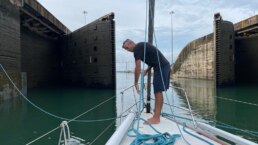
 Tidbits
Tidbits
Fisheries Supply Fall Swap Meet 2025 Saturday, October 4
The Fisheries Supply Swap Meet is a maritime flea market brimming with boating goods, from old and new parts to outboards, buoys, dock lines, coolers, heaters, chain, clothing, and so much more. It’s a haven for die-hard bargain hunters, some of whom arrive the night before to secure the best parking spots (though sellers are reminded that the lower tier of the upper parking lot, closest to the store entrance, is off-limits). In addition to the hundreds of boaters buying, selling, and trading equipment, Fisheries Supply will offer unbeatable deals on clearance items, discontinued stock, overstock, scratch-and-dent products, and last season’s clothing. Don’t miss out!
06:00 AM – 13:00 PM (Opens at 6am downstairs across from Gas Works parking lot and 7am upstairs) Come as early as you like to get the best deals. Fisheries Supply Parking Lot (across from, but not in, Gasworks Park) 1900 N. Northlake Way Seattle, WA 98103 >>>
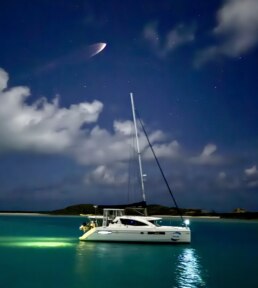
Got a report, scoop, story, picture, subject or contact at a marina who wishes to work with us ? Please get in touch with us.
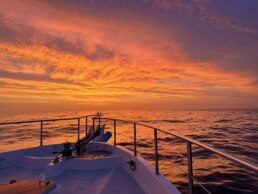
Extraordinary Cruising °°° Join the Fleet
- Access vetted local knowledge, safety resources, and prior experiences to make your passage safer and more enjoyable.
- Unlock a Life of Adventure
Explore hidden destinations, experience new cultures, and discover the freedom of life at sea or near shore – on your terms. - Get VIP Perks & Discounts at marinas, chandleries and boatyards
Get exclusive discounts, priority access, and personalized support at partner marinas across the globe. - Observe the actions of Experienced Captains
Tap into a wealth of tips, tools, and real-world know-how from seasoned mariners to grow your skills and gain confidence. - Make Every Nautical Mile Memorable
Join events, meetups, and shared journeys that turn you voyages into unforgettable stories and lasting memories. - Cruise with a Conscience
Gain insights into sustainable practices and join a movement that protects the waters you love to explore.

CRUISING ° FLEET UPDATE & NEWS 2025-09-21
You would make a ship sail against the winds and currents by lighting a bonfire under her decks? I have no time for such nonsense,
spoken when first hearing of Robert Fulton’s steamboat invention, highlighting his practical disdain for such seemingly impractical ideas
CRUISING ° FLEET UPDATE & NEWS ⚓ 2025-09-21
Ocean Posse Burgees 🚩 Panama
Today’s Money Shot From Saint Emilion
Port Grimaud Golfe De Saint Tropez
Ocean Posse Cartagena Spain Kick Off Event Sep 27
Toulon 🇫🇷 France a Practical Guide
Plymouth 🇺🇸 MA
Share the Joy of Cruising Without a Set Schedule
Win 250 Take Part in the Ocean Posse Annual Survey
Introducing Marina Bas Du Fort 🇬🇵 Guadeloupe
Our New Sponsors of the Ocean Posse
The Ocean Posse ⚓ Route Pods
Meet the Fleet 🇧🇸 My Pelicano
Reminder 4 Days of Cruising Seminars 🇺🇸 San Diego Oct 14 – 17 2025
Tehuanetepec Winds 🌬️ Mexico 🇲🇽
Official Ocean Posse Events
Must See Palenque 🇲🇽 Chiapas Mexico
Delta Mike Marine Supply 🇵🇦 Panama Sponsors the Ocean Posse
Media Partners
Ocean Posse Fleet 🛰️ Tracking
Panama Canal Museum
Ocean Posse Merchandise
💬 Tidbits
— Ocean Posse Sailing Vessel Pawpaw is for Sale
— Mexican Tip issues
OCEAN POSSE BURGEES 🚩 panama
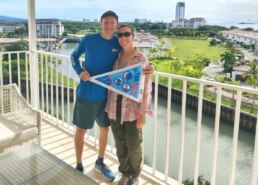
Getting burgees to everyone in the world is a challenge. In Panama our agent Emilio handles the deliveries and gets the job done in person.
SY CAVU 🇺🇸 David & Marla – Tartan 37′
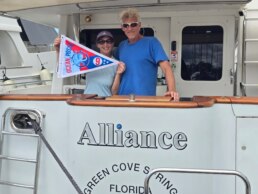
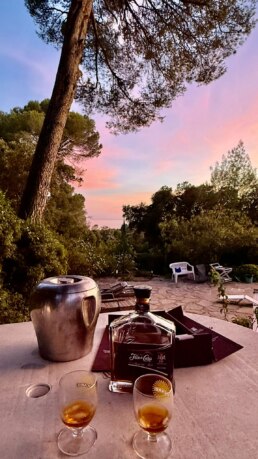
SY PATHFINDER x 🇺🇸 J.P. & Nicole
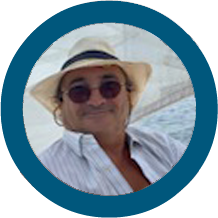
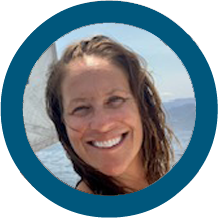
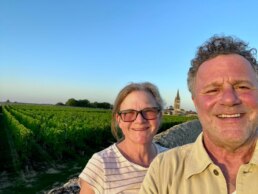
Today’s money shot from Saint Emilion
MY HO’OKIPA 🇺🇸 Lisa & Lucky Chucky – Selene 43′


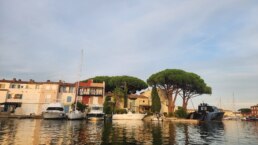
PORT GRIMAUD GOLFE DE SAINT TROPEZ
43° 16.145′ N 006°35.3733′ E
SY SMALL WORLD III 🇻🇮 Karen & Daren – Bristol 47.7′
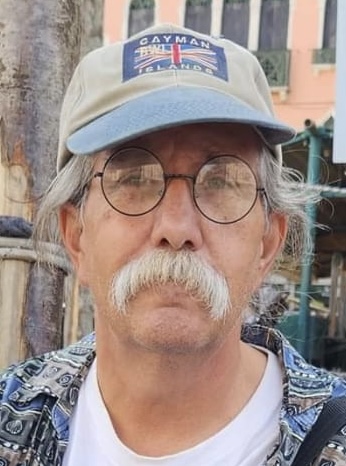
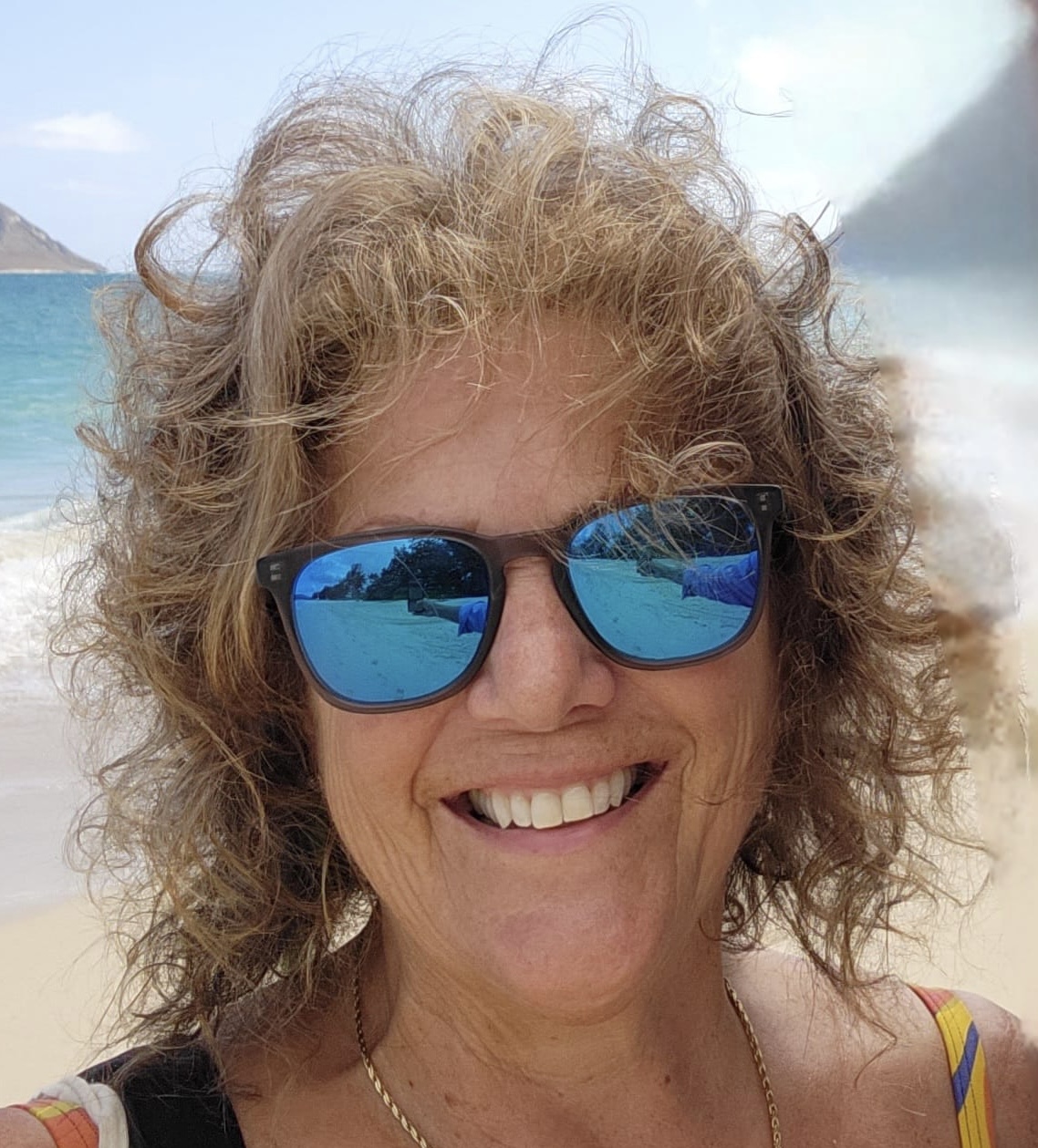
OCEAN POSSE CARTAGENA KICK OFF EVENT
SATURDAY SEPTEMBER 27 ’25 @ 16:00 -21:00
brought to you BY
YACHT PORT CARTAGENA
Flor De CAÑA RUM

RSVP HERE


TOULON 🇫🇷 FRANCE
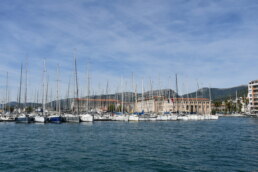
43° 06.2966’N 005° 54.9733′ E
Toulon a practical guide
The lay of the land (and sea)
Toulon sits between Cap Sicié to the west and the Giens Peninsula to the east, fronting one of the most sheltered natural harbors in the Mediterranean. Two roadsteads – the Grande Rade (outer) and Petite Rade (inner) – are enclosed by headlands, forts, and breakwaters. The naval arsenal and base dominate the inner harbor; commercial ferries work the outer. For cruising yachts, that geography means protection in most conditions, a web of services ashore, and quick hops to exquisite island anchorages (Porquerolles, Port-Cros) or rugged day sails west toward the calanques of Cassis and Marseille.
The city’s character is maritime to the core: shipyards, ferries, fishing, naval gray, and the hum of a working port balanced by markets, cafés, and beaches along Le Mourillon. If you want a Riviera stop that feels seamanlike, useful, and authentic rather than frilly, Toulon punches above its weight.
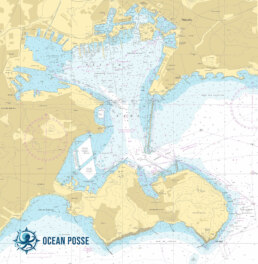
Why visit – the Ocean Posse case
• Shelter and seamanship – One of the Med’s best all-weather havens. When the Mistral rakes the Golfe du Lion, Toulon’s double roadstead is a balm.
• Services that matter – Prop shops, riggers, machine and welding, electronics, sailmakers, haul-outs nearby. You can fix real problems here.
• Gateway cruising – East to Saint-Tropez, the Esterel, and onward to the Riviera; west to Bandol, Les Embiez, La Ciotat, and the calanques; south to the Hyères isles for Posidonia-clear anchorages.
• History you can walk – From Vauban’s bastions to Napoleon’s first taste of command, from the WW2 scuttling of the French fleet to the modern carrier strike group, you feel the naval tradition in your boots.
• Ashore value – Markets, provisioning, transport links (TGV, ferries, airport at Toulon-Hyères), beaches, and straightforward costs compared with glitzier neighbors.
• Good crew energy – It’s a working town with real sailors. You’ll find spares, advice, and hands who know which end is forward.
Approaches, traffic, and first impressions
Charts and scale. Approaches are simple in settled weather but busy. Expect fast ferries bound for Corsica, naval traffic (including patrol craft with right of way), pilot boats, and tugs. The outer roadstead is large, marked, and deep with obvious leading marks and lit heads.

Approaches, traffic, and first impressions
Charts and scale. Approaches are simple in settled weather but busy. Expect fast ferries bound for Corsica, naval traffic (including patrol craft with right of way), pilot boats, and tugs. The outer roadstead is large, marked, and deep with obvious leading marks and lit heads.
Traffic separation and controls.
Keep a sharp watch on AIS and make early, positive alterations to avoid ferry tracks. The navy enforces temporary exclusion zones around moving units and sensitive piers; follow any patrol boat instructions without debate. Drone use is a hard no anywhere near the base.
Wind and sea.
The Mistral (NW) is the main game – strong, dry bursts that lift short, steep chop outside but blow clean over the roadstead. An easterly or southeasterly is the swell-maker; the outer rade remains serviceable, but you’ll prefer inner berths or the lee of Saint-Mandrier, Cap Brun, or the Mourillon mole. Summer sea breezes fill from the S to SE most afternoons.
Night entries.
Straightforward in good visibility; mind ferry schedules and lit buoys. The harbor’s light clutter can be busy; don’t shortcut around marks and do not stray anywhere near naval quays.
Weather and seasonality – when to time your call
• April–June –
Crisp air, rising temperatures, water warming, wildflowers ashore. Fronts still swing through; Mistral episodes a factor but anchorages are less crowded.
• July–August –
Hot, settled, afternoon sea breezes. Marinas run tight; book ahead. Island anchorages picturesque but regulated, with moorings and Posidonia protections.
• September–October –
Peak for passagemakers. Water’s warm, crowds thin, nights lengthen. Occasional easterly blows and first autumn lows.
• Winter –
Viable for hardy crews. Mistral periods more frequent; Toulon remains a safe bolt-hole with year-round services.
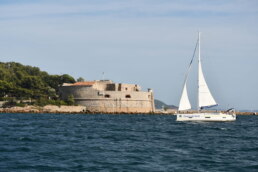
Anchorages – where a skipper actually drops the hook
General anchoring guidance. The harbor is large, but space for yachts is naturally constrained by naval, commercial, and ferry operations. You will often anchor outside the Petite Rade proper, in defined zones of the Grande Rade, or choose nearby coves along Cap Brun and the Giens side when conditions allow. Always avoid Posidonia meadows and respect buoyed prohibitions. Good ground tackle and a tidy, ready-to-run chain locker remain the Ocean Posse way.
In and around the roadstead
• Anse du Creux Saint-Georges – Saint-Mandrier side (lee spots)
43° 4.9501′ N 005° 55.4198′ E
Tucked behind the Saint-Mandrier peninsula, several pockets offer serviceable holding in sand with weed patches. They shine in light to moderate NW–W winds, giving you proximity to yard services and a short dinghy hop to cafés. Watch depths and ferry wakes; roll stoppers help on busy afternoons.
• Cap Brun / Anse Magaud / Anse Méjean
43° 6.4987′ N 005° 58.7709′ E
East of the main port, indented coves under high ground offer clear water and sand tongues between weed. Best in calm or light northwesterlies. Tight quarters in summer and locals know the sand veins by heart; arrive early and dive the set.
• Off Le Mourillon beaches
/ Lido
43° 6.3496′ N 005° 56.4698′ E
Day-stop fair-weather anchoring with quick access to beach promenades and provisions. Swell wraps in during easterlies; not advised overnight when onshore breezes stiffen.
The Hyères islands – day hops with big returns
• Moorings or Marina @ Porquerolles (N side in settled weather, S side in rare calms)
43° 0.1013′ N 006° 11.9198′ E
Water like cut glass, sandy plates between meadows, and park-style mooring regimes in season. The village is sailor-friendly. Expect regulation buoys, ranger boats, and anchoring restrictions over Posidonia that are enforced. Dinghy smartly and stow oars and fuel.
• Port-Cros (National Park)
42° 59.8493′ N 006° 22.2791′ E
Mooring fields predominate; anchoring is highly restricted. Trails, wildlife, and a deep cove aesthetic. When the wind humbles, this is Eden; when it pipes, you’ll be glad you’re secured to stout park tackle.
Westward – character harbors within reach
• Les Embiez
43° 4.5498′ N 005° 46.6198′ E
A classic mariner’s stop: secure marina, good holding outside in settled conditions, and a practical place for a short breather after a Mistral leg.
• Bandol
43° 8.1498′ N 005° 46.0013′ E
Lively, compact, and useful. Marina berths often booked in summer; holding outside is exposed in onshore weather but OK in calm spells.
• Cassis and the Calanques (beyond)
43° 12.6196′ N 005° 22.7796′ E
For the weather window sailors: staggering beauty, tight control, limited permits, and not a place to improvise. Plan, reserve, and carry your best ground tackle.
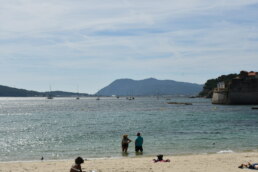
Marinas, yards, and getting work done
Toulon proper has multiple basins and visitor options, though the naval arsenal dominates the inner waterfront. Civilian marinas on the north and east sides of the Petite Rade serve visiting yachts with the usual Med-moor arrangements. Depths and berthing are friendly to most cruising sizes; larger cats should book in advance for beam. Expect fuel, water, power, Wi-Fi, showers, and laundry. Nearby are chandlers from “bits-and-bobs” up through professional electronics and hydraulics.
Saint-Mandrier & Port Pin Roll
and anchor the peninsula’s service side: a cluster of yards with lifts, hard standing, sail lofts, and riggers who understand real passagemaking loads. If you bent a stanchion, need a cutless bearing, want a custom bow roller, or must chase a gremlin in a genset panel, you can sort it here. Welding and fabrications are part of the local DNA.
La Seyne-sur-Mer
across the bay offers additional moorings and yards. The ferry shuttle links you easily to central Toulon if you berth there. It’s a solid alternative when the inner berths are tight or you want a quieter vibe with the same upside of proximity to services.
Hyères (east) and Porquerolles (seasonal)
add visitor berths when you’re staging for the islands. Hyères is city-convenient with big-box provisioning and transport links; Porquerolles’ harbor is charm incarnate but runs on park rhythm – think earlier arrivals and polite patience.
Fuel & gas. Multiple fuel stations serve the basin; plan to approach when ferries are not turning and keep spring lines ready. Butane/propane exchanges are widespread; adapter sets smooth the differences.
Spares and suppliers. Expect to find:
• standing and running rigging shops
• sailmakers who welcome repairs and re-cuts
• prop and shaft specialists (alignments, couplings, seals)
• electronics installers who can debug NMEA backbones and radar overlays
• watermaker service, hydraulics, and stainless fabrication
• dinghy and outboard service
This is one of those ports where “it can be done” is the default answer.
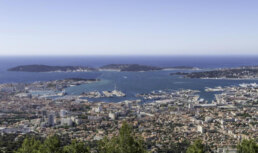
Plymouth 🇺🇸 MA
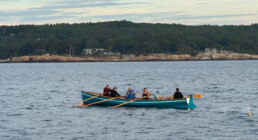
SY AUTUMN MOON 🇺🇸 Laurin & Elisa – Fountaine-Pajot 41′
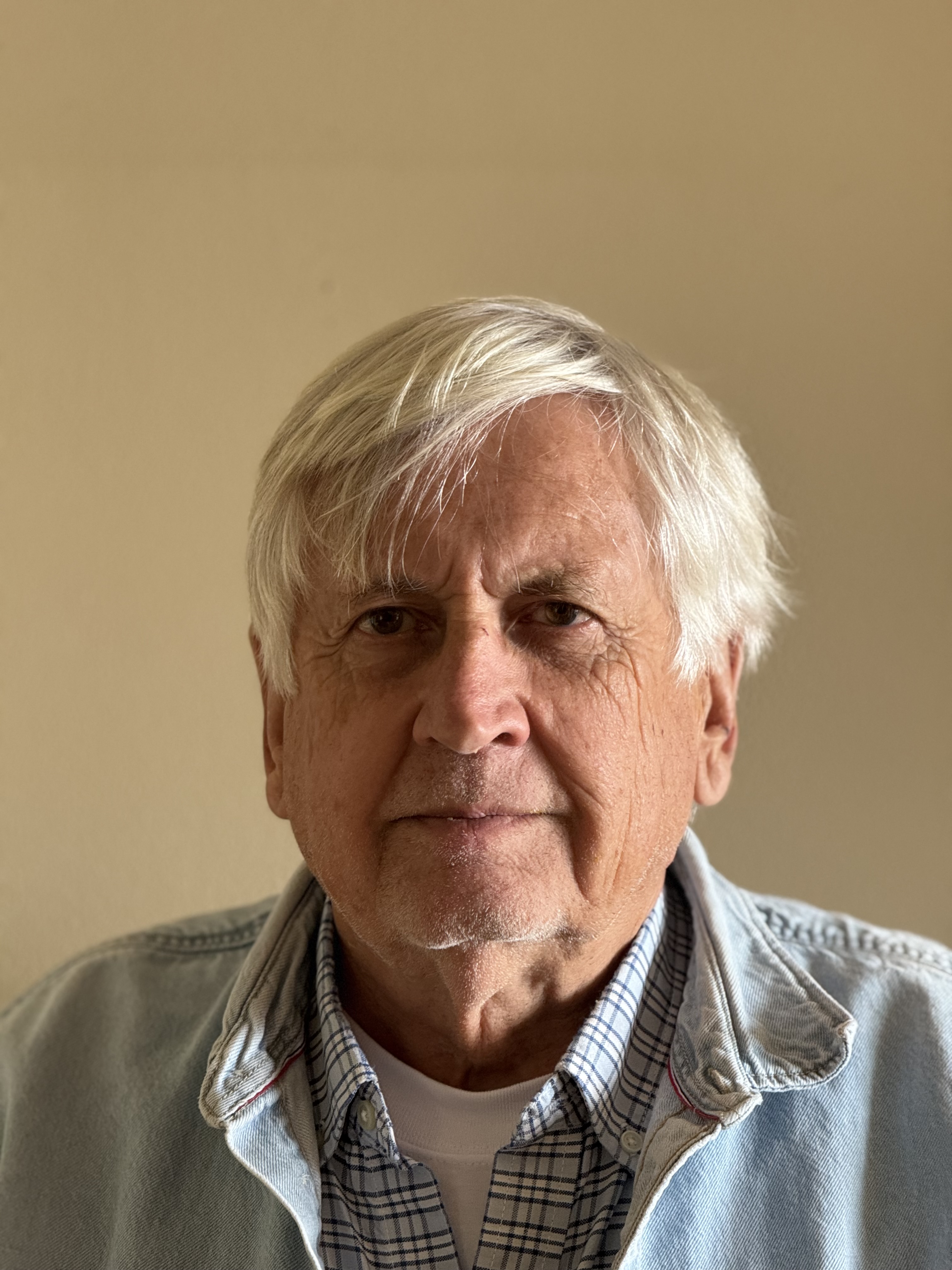
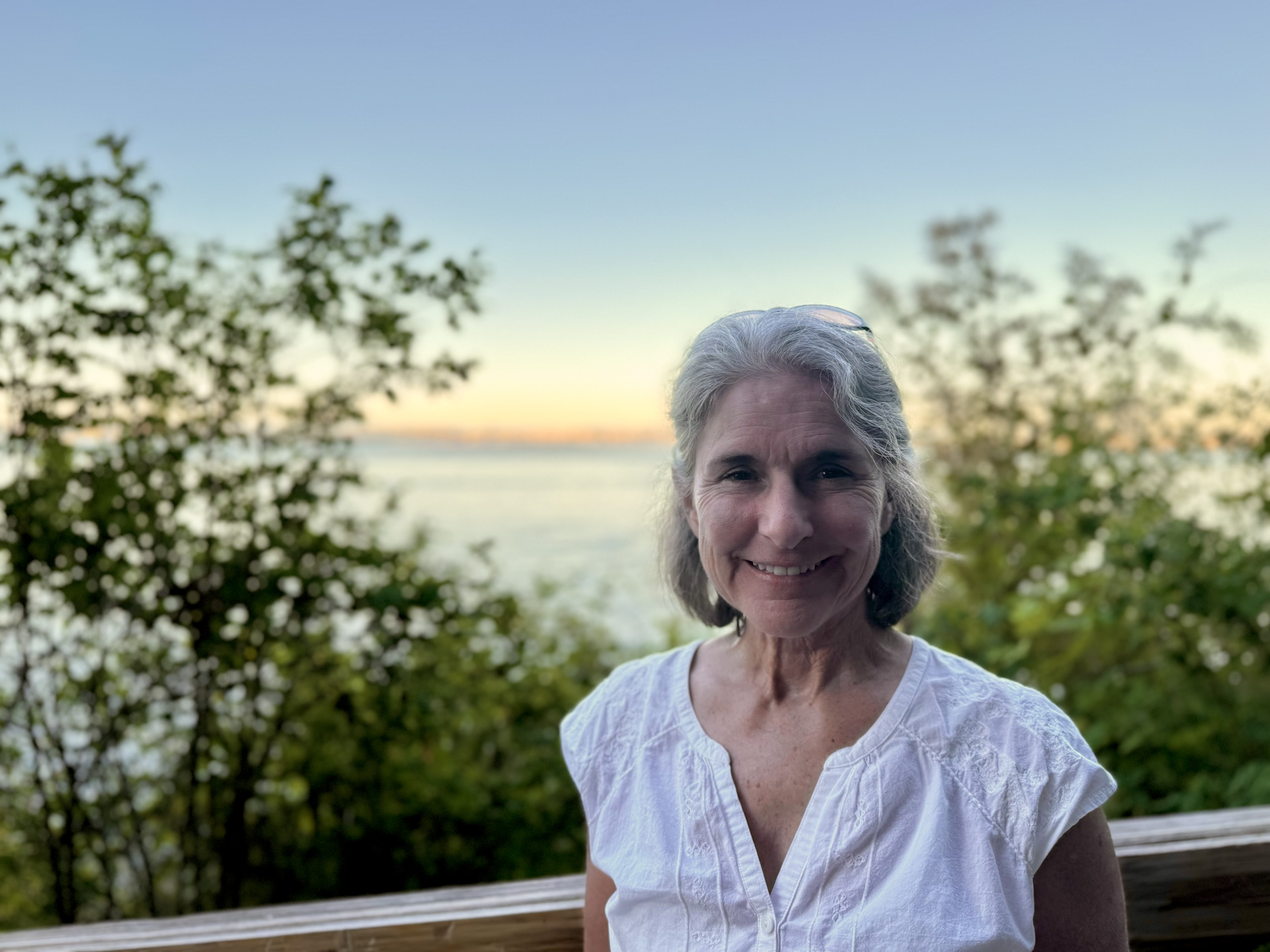
It’s That Time Again – The Ocean Posse Annual Survey Has Dropped ⚓️
Ahoy Captains and Crew,There’s nothing quite like a good maritime survey to get your day started – a little honesty, a little embarrassment, and a whole lot of truth. We’re excited (yes, really excited) to hear what you really think.
This is your chance to weigh in – anonymously – and help shape the course of the Ocean Posse fleet. No names, no judgments, just your salty insights.Grab a coffee, drop anchor, and take a few minutes to fill it out. 👉
We’re counting on you – and there might just be a $250 prize at the end of your honesty.Stay informed, The Ocean Posse Team
INTRODUCING MARINA BAS DU FORT 🇬🇵 GUADELOUPE
OUR NEW SPONSORS OF THE OCEAN POSSE
16° 13.3266′ N 061° 31.7816′ W
Welcome aboard to Marina Bas du Fort in sunny Guadeloupe — a proud sponsor of Ocean Posse! We hope you enjoy the calm waters, helpful harbor staff, and safe approach into this beautiful port. May your stay here enrich your maritime journey, fuel your adventure spirit, and renew your love for the sea. Fair winds, bright stars, and enjoy Guadeloupe !
Discounts for Ocean Posse members:
-High Season: 10% discount on the first visit.
-Low Season: 15% discount on the first visit, and 10% on every subsequent passage.
-Hauling Out: 10% discount on the first haul-out.
Reservations are subject to availability.
Amenities
Reception & Assistance
• Physical, telephone, and VHF (Channel 9) reception
• Assistance with docking provided by port officials
• Warm welcome for check-in and customs formalities
Customer Support
• Information on prices, contracts, and marina amenities
• Guidance and referrals to local professionals and service providers
• Invoicing for visiting boats, long-term berths, and Technical Area usage
On-Site Facilities
• Marina shop with nautical and leisure items
• Daily weather reports and related maritime information
• Mail and correspondence handling for yachtsmen and management
Marine & Technical Services
• Dedicated Technical Area for repairs and short-term maintenance
• Professional assistance and support from the harbor master and team of 4 agents
Harbor Master Office
• Patient, professional, and welcoming staff always ready to assist
• Available daily (Low season: 07:30–18:30 | High season: 07:00–20:00)
• Emergency on-call service outside office hours
MARINA BAS DU FORT – SAFE APPROACH
1
NEARBY
La Réserve Cousteau / îlets Pigeon (Bouillante, Basse‐Terre)
Turquoise waters, vibrant coral, turtles, and excellent snorkeling & diving. A marine protected park with reefs full of life. Anchor off and explore under-water gardens.
Les Saintes archipelago (especially Terre-de-Haut & Terre-de-Bas)
Charming villages, colorful houses, sheltered bays, great food, and peaceful anchorages. The view from Fort Napoléon is worth the climb. Anchor in the bay, then paddle, snorkel or explore on foot.
Pain de Sucre (Les Saintes)
A beautiful sand islet / shallows / reef area near Les Saintes, perfect for snorkeling, relaxing, and enjoying calm water whilst anchored linguing under the sun.
Grande-Terre beaches: Sainte-Anne, Caravelle, Pointe des Châteaux
Wide sandy beaches, good sailing / windsurf spots, scenic views, coastal markets and colors. Pointe des Châteaux is great for dramatic coastline, sea breezes, sunrise.
Basse-Terre rainforest & waterfalls (La Soufrière, Chutes du Carbet, Cascade aux Écrevisses)
When you need a break from salt spray, drop anchor, take a tender/shuttle to hike the jungle, swim in waterfalls, see volcano geology.
Bouillante thermal springs & hot-sea interaction
Anchored bays with nearby hot springs (where volcanic activity warms the rocks/sea), great for a soak, relaxation after diving or long sails.
Grand Cul-de-Sac Marin
This shallow bay with many islets is good for protected sailing, exploring mangroves, anchoring in calm water, relaxing in nature away from more exposed anchorages.
Deshaies
A picturesque town on the northwest of Basse-Terre, used as a safe harbour / stop for yachts. Good provisioning, calm anchorages, botanical gardens nearby, local culture & food.
Anse-à-l’Eau / Baie Olive and other small coves & mangroves
Explore smaller bays, mangrove forests, hidden coves by kayak or tender, enjoy peaceful nature, birds, shallow waters.
Pointe de la Grande-Vigie & northern cliffs
For dramatic scenery. Cliffs, wind, ocean pounding. Beautiful on approach by boat, interesting coastal hikes once ashore. Useful waypoints when rounding northern Grande-Terre.
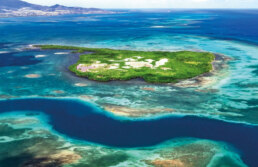
THE OCEAN POSSE ⚓ ROUTE PODS
This season it’s time for you to choose your Pods – or mini Posse’s think of them as your route tattoos for your voyage ahead.
Each pod has its own emoji tag so you can mark your cruising plans and spot kindred spirits. If you invent a new route you can pick your own symbol and pod name.
⚓ 👉 Each pod = your Route Tattoo : just drop the emoji in chat to tag yourself and show your season’s cruising vibe.
Extra DIY points for stitching or painting your emoji on this season’s burgee . Your annual membership of $ 349
gives you full support along any of these routes and your membership gives you full access to resources in 50 + maritime areas !
The Ocean Posse is extremely pet friendly – bring your best friend along !
MEET THE FLEET 🇧🇸 MY PELICANO
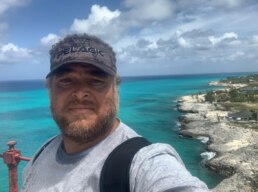
MEET Roston AKA Gilligan
The name of my boat is Pelicano – I only bought her less than two months ago! 🥳
I didn’t actually learn her name until I saw it in the bill of sale. It isn’t on the transom and it wasn’t her name, so much as that the was a Manatee 36, that I was primarily interested in. She’s the second Manatee that I’ve tried to buy and even with her, I thought she’d slipped through my fingers for a time
I thought Pelicano would be place holder until I thought of something more meaningful. When I got back to Florida after the survey and sea trial, I was watching Pelicans, and something I observed gave me somewhat of an epiphany, and so I think that the name might actually stay. I’ll decide one way or another when I get her back to Exuma.
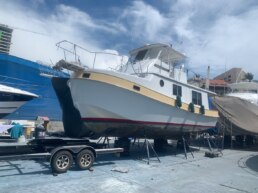
⚓ My Journey
I actually live on a houseboat in Elizabeth Harbour, George Town Exuma, Bahamas.
I have been running a marine salvage and towing company out of here, since 2016. Most of my work travels have been in Bahamian waters – usually towing one or another boat back towards Florida waters. Four Years ago, things worked out such, that I spent much of the lull between waves of COVID, delivering our new long range tow boat down the US Atlantic seaboard from Baltimore. That was my first time cruising in US water. Water’s where I couldnt read the bottom with my own eyes…. initially; it was…. tense….
We’ve put more that 20,000 NM beneath her keel in the last four years.
I’ve had the privilege of crewing on the other side of the Atlantic as well – One transatlantic from Exuma to the Azores, and parts of three different summers – first in England, Ireland, North Ireland and Scotland, then from Stavanger Bergen, in Norway and lastly in Strömstad, Sweden.
South Ireland is the place I long to go back, then most…..
I have been running a marine salvage and towing company out of here, since 2016. Most of my work travels have been in Bahamian waters – usually towing one or another boat back towards Florida waters. Four Years ago, things worked out such, that I spent much of the lull between waves of COVID, delivering our new long range tow boat down the US Atlantic seaboard from Baltimore. That was my first time cruising in US water. Water’s where I couldnt read the bottom with my own eyes…. initially; it was…. tense….
We’ve put more that 20,000 NM beneath her keel in the last four years.
I’ve had the privilege of crewing on the other side of the Atlantic as well – One transatlantic from Exuma to the Azores, and parts of three different summers – first in England, Ireland, North Ireland and Scotland, then from Stavanger Bergen, in Norway and lastly in Strömstad, Sweden.
South Ireland is the place I long to go back, then most…..
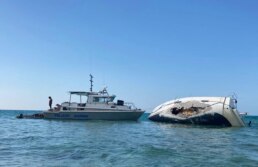
What motivated me to take on this lifestyle ?
I grew up on Stocking Island, the barrier island that forms Elizabeth harbor – At the property now known as Kavalie House. I practically learned to swim before I learned to walk and boating was more central to my life than bikes or basketball. My father owned a mooring field, so storm prep was something I was familiar and helping with since I was probably nine or ten. Dad salvaged a West Sail 32 after hurricane Lili, in 1996 and that was my first taste of actual cruising. We vacationed on her for two summers before he eventually sold her.
I really actually stumbled into salvage. My own Morgan 41 sunk in hurricane Mathew and refloating her was my very first salvage project! I didn’t go into it profsionally until several years later.And it was still really just a side-gig, until I went north to Freeport and the Abacos to work in the aftermath of hurricane Dorrian.
Over the last several years, it’s become routine to go hundreds of miles offshore in aid of a stranded sailor or in search of an abandoned vessel. It’s helped me to become a lot more methodical in my thinking – trying to envision what could possibly go wrong; and account for it in planning – in avoiding certain things/places, in having the right spares, supplies, tools and equipment aboard.
Two of the ships many montras.
- “If you need one, have two. If you need two, have three!”
- “Hope for the best; Plan for the worst.”
But it’s still beyond humbling to often discover – through experience and observation – how often a breakage in just a few ounces of metal, can rended an entire vessel completely helpless or painfully crippled…..
It’s all of the above, that have cumulatively given me the courage and confidence to buy a single-engine trawler 3000+ miles from home, and set out to bring her back to The Bahamas.
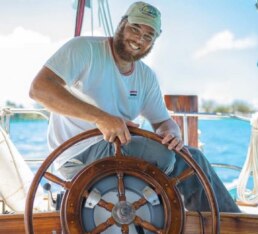
This journey home from Peurto Vallatra to Exuma, is really the first real voyage that I have set out on ‘deliberately,’ as it were…. England, Ireland, Norway, Sweden, the Azores – all of those were trips that were. I didn’t envision or instigate any of them. I was a passenger.
BUT This one; this voyage I’ve chose deliberately. And it’s the closest thing to a leap of faith that I think I’ve ever taken. Strange new lands, different cultures, and almost all of it in foreign languages…. I don’t know exactly what I’ll find but I’m looking forward to the finding.
I am looking forward to sharing the trip with crew and friends. When James P Thompson whisked along to Europe aboard S/V Ariel; It broadened my horizons in ways I could never have imagined…. And I have always felt the obligation to try to pay that forward, as much possible. Even on Salvage jobs – If work takes us to an island that myself or the crew has never been to before, we take a day or two and play tourist. To explore the island as much as circumstances permit.
We’ve also found the most amazing food that way!!
What’s one moment at sea that changed the way you see the world?
I think the most impactful experience for me, was making landfall in Lupeon in the Dominican Republic. I was in my early 20’s at the time, and had been to many Bahamian Island by boat. A lot of that had been in my 25′ beach cat, that probably had no business being way out there! 😂 So – a so-so seasoned sailor. Salty at least.
Well; I was on watch the morning of the day we made landfall. And I saw this weird cloud dead ahead but it wasn’t blowing from left to right, like the others were. And I “knew” in couldn’t be land – we were still 50-something miles offshore. and everyone “knows” you simply can’t see land until you’re only about 10 miles out!
Well, it WAS land. It was a mountain, coming straight up out of the ocean and going straight up into the clouds… A completely new and unexpected experience for a kid who grew up knowing only a limestone archipelago; where our highest point is all of 200-and-something feet!
That kind of set the tone for all of my travels really, What I appreciate most and seek out, are the differences between home and wherever I’m traveling to. Be that thick fog, Snowbanks, slate cliffs, soaring costal forests, thick mountain jungle, cascading waterfalls…. Different plants and animals….
Different ways of doing things – solving the same problems we face back home, but with the different local resources and equipment and approaches. I especially like seeing the similarities and differences between The Bahamas and other island nations. Logistics, equipment, geographical and space constraints…
What’s been the most unexpected lesson you’ve learned while living and traveling on your vessel?
Well, this isn’t drawn solely from my boat alone but gleaned from some of the most memorable calls we’ve responded to and the Search and Rescue operations I’ve been directly involved in and on the periphery of:
1) In this day and age, there is no reason for every cruising vessel that puts to sea, to have a satellite tracker, at the VERY least.
For the peace of mind for anyone left ashore, that is going to be the one reporting you overdue… Please… Please… Please…. Remove what’s potentially the biggest question mark of their life, for your loved ones.
2) A satellite messenger can turn an emergency, into an annoyance or mild inconvenience.
We once responded to a sailboat that had lost steering. He bobbed around out there for two and a half weeks, before he finally called for a tow. He was not forced to abandon his vessel when he was offered that by a passing ship. His family knew where he was and that he was in no immediate danger. When he finally decided that he needed a tow, he was able to send regular position updates and guild us in for a most uneventful rendezvous – some 200+ miles offshore.
3) Always install the biggest bilge pump the available space allows!
4) Install audio and visual high water alarm(s)! You ALWAYS want to know sooner than later!
How do you connect with the cultures and communities you visit? Any memorable interactions that left a lasting impression?
Food. Through food. Give me the street food, give me the spots the locals eat! Give me the drinks and dishes I’m only gonna find in this country or region or town.
Dido art work, artisans, and other local crafts. And architecture. I was in construction before I got into salvage. I’d rather tour an active construction site, than a palace. I love taking in architecture, civil infrastructure(once again – things that are different from back home).
Worship is also very important to me, so I always seek out and look forward to attending the local Kingdom Hall of Jehovah’s witnesses whenever at all possible.
I’ve honestly never had big wonder lust. No burning drive to sail off into the sunset again and again. I think I might be developing it a little in recent years but most of where I want to go, is still mostly by plane, train and automobile.
Bucket list ?
- Back to Ireland.
- New Zealand
- Total Solar Eclipse (Hopefully in Australia)
- Iceland for the volcanoes and northern lights
- Work for a marine salvage and towing company in the summers, in Alaska.
- Maybe find a patch of cool, high-altitude mountain jungle to call my own and put down a hut. (I’m very excited and hopeful, where Costa Rica is concerned)
Connect with me here
https://www.facebook.com/valiantmarinesalvage
https://www.facebook.com/roston.mcgregor
“If anything’s gonna happen; It’s Gonna happen out there!”
Cant. Ron
“No-one ever lost a good nights sleep because their anchor was too big.”
Rsoton
MY PELICANO 🇧🇸 Giligan – Kady Krogen 36′
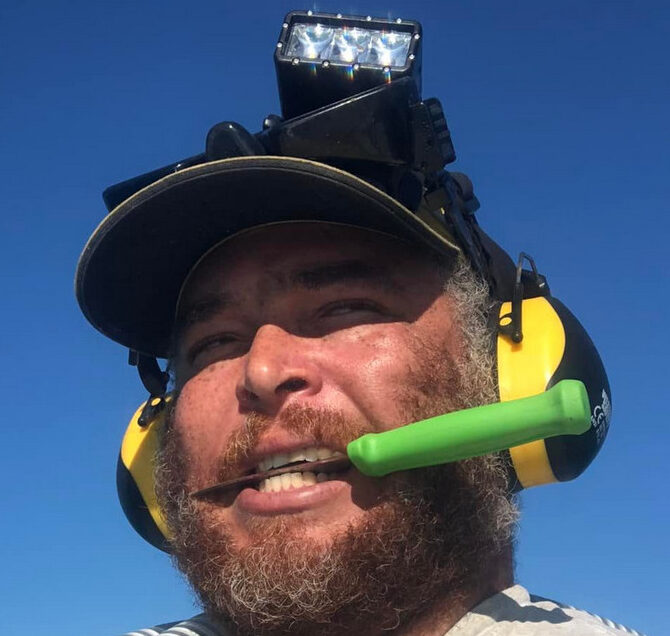
REMINDER 4 DAYS OF CRUISING SEMINARS 🇺🇸 SAN DIEGO Oct 14 – 17 2025
RESERVE YOUR SEAT TODAY >>
- Tuesday, October 14, 2025 – Seminars
- 10:00 – 12:00 Watermakers & Plumbing in Paradise – Rich Boren
- 12:00 – 14:00 Working Lunch (Uber Eats, etc.)
- 13:00 Diesel Engines & Generators – Preventive Maintenance
- 14:00 Rigging 101 – Standing & Running
- 15:00 Weather – Planning, Routing, Underway
- 16:00 Crew – The Good, the Bad & the Ugly
- 17:00 Cruising Pacific Mexico – Check-In/Out & Sea of Cortez
Wednesday, October 15, 2025 – Seminars
- 09:00 South Pacific – FP, Cooks, Tonga & Fiji
- 10:00 Safety, Security & Emergencies Abroad
- 11:00 Electrical Systems – Batteries, Chargers, Solar
- 12:00 – 14:00 Lunch Break
- 14:00 Boat Repairs Outside the US
- 15:00 Staying Cool – Refrigeration, AC, Shading, Airflow
- 16:00 Anchoring
- 17:00 Destinations – Costa Rica & Nicaragua
Thursday, October 16, 2025 – Seminars<
- 09:00 Destination Belize & Rio Dulce (Blue Hole & Routes)
- 10:00 Communications Onboard & Ashore (Starlink, etc.)
- 11:00 Electrical Fundamentals – Wires, Connectors, Fuses
- 12:00 – 14:00 Lunch Break
- 14:00 Chart Accuracy – Navigation Tips & Tricks
- 15:00 Provisioning, Propane & Fuel Logistics
- 16:00 Yacht Insurance
- 17:00 Destinations – Colombia, Jamaica & Bay Islands (Roatán)
Friday, October 17, 2025 – Seminars & Party
- 10:00 Cruising Panama & the Canal (San Blas)
- 11:00 OpenCPN – Satellite Charts & Use Cases
- 12:00 – 14:00 Lunch Break
- 14:00 Ocean Crossing – Pacific & Gulfstream
- 15:00 Safety & Security
- 16:00 Crew – The Good, the Bad & the Ugly
- 17:00 – 21:00 Rum & Music Party 🎶🍹
TEHUANETEPEC WINDS 🌬️ MEXICO 🇲🇽
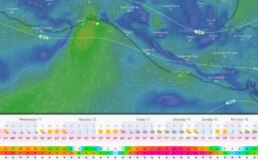
Nature’s Funnel Across Mexico
Original Posse Pods and sailors venturing along Mexico’s southern Pacific coast inevitably become acquainted with a powerful phenomenon: the Tehuantepec winds. These bursts of gale-force air, often called Tehuanos, sweep from the Gulf of Mexico through the Isthmus of Tehuantepec and fan out across the Pacific. They have been feared, respected, and carefully navigated by mariners for centuries. Understanding them is essential for safe passagemaking between southern Mexico and Central America.
Geography – Why They Happen Here
The Isthmus of Tehuantepec is the narrowest stretch of Mexico, where the Sierra Madre ranges dip and form a relatively low gap between the Gulf of Mexico (Atlantic basin) and the Pacific Ocean. Here the landmass measures less than 200 kilometers across. This topographical notch acts like a nozzle: when pressure systems develop over the Gulf, the winds seek a shortcut and pour across the isthmus.
On the Pacific side, the winds spill out through the Gulf of Tehuantepec, a broad bight between Salina Cruz and Puerto Chiapas. With little in the way of natural windbreaks, the air accelerates across the flat coastal plain and races hundreds of miles out to sea. For sailors, it creates a swath of wind and waves that must be crossed with caution.
The Mechanics of the Tehuantepecer
The driver is pressure gradient. High-pressure systems frequently build over the Gulf of Mexico in the winter months. Cold, dense air masses surge southward, piling against the Sierra Madre Oriental. The mountain ranges to the east and west block most of the flow, but at Tehuantepec the land dips, leaving a gap barely 250 meters above sea level. The winds funnel through with force, accelerated by the Venturi effect.
Once released, these winds roar across the Pacific coastline. Near shore, they can exceed 40 to 50 knots in extreme cases. Out at sea, the gale-force belt can extend 200–300 nautical miles offshore. Seas are steep, short, and chaotic, whipped up by the sudden blasts. Swells from the north mix with Pacific cross-seas, creating a dangerous washing machine.
Local fishermen call them Tehuanos. Meteorologists classify them as a type of “gap wind,” akin to the Bora in the Adriatic or the Papagayos further south in Central America.
Seasonality and Frequency
While Tehuantepec winds can occur in any month, they are most common from October through March. This is when cold fronts sweep across North America and push deep into the Gulf of Mexico. Each front can trigger an event lasting anywhere from 24 hours to over a week.
• Peak season – Mid December- February
• Average frequency – 15–20 events per season
• Intensity – Moderate blows of 25–35 knots are common; major gales surpass 50 knots and are often reported by commercial shipping.
By late spring, the trade winds and tropical systems dominate, reducing the frequency of Tehuantepecers. Still, an unseasonable winter front can surprise the unwary sailor even into May.
Historical Context
Long before modern forecasting, mariners feared this stretch of coast. Spanish galleons in the Manila trade took wide offshore routes to avoid being caught. Logbooks describe sudden gales that shredded sails and drove vessels onto a lee shore. Fishing villages along Oaxaca still tell tales of boats lost when the Tehuano descended unexpectedly.
Even today, modern shipping lanes acknowledge the hazard. Bulk carriers and container ships time their crossings with weather windows, sometimes delaying by days to avoid punishing seas.
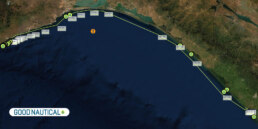
The Navigator’s Challenge
For Ocean Posse captains heading from Huatulco toward Chiapas or onward to Guatemala and El Salvador, the Tehuantepec crossing is the key tactical passage. It demands planning, patience, and respect.
1. Reading the Weather and wait for port captains visto bueno
Today’s mariners have tools the Spaniards never dreamed of: GRIB files, satellite imagery, NOAA discussions. A Tehuantepec event is almost always forecast with at least 48–72 hours of lead time. Captains watch for cold fronts diving into the Gulf of Mexico and note the associated pressure gradients.
2. The Shoreline Tactic
One tried-and-true method is the one-foot-on-the-beach rule. By hugging the coastline within 1–2 nautical miles, sailors can avoid the worst of the wind fetch. The mountains and coastline offer a measure of protection, keeping seas lower. This coastal route requires constant vigilance, as shoals and fishing gear can be hazards, but it allows yachts to thread through the gale zone with less pounding.
3. The Offshore Gambit
Some captains choose to head 250–300 miles offshore, where the winds, though still strong, have lost some of their violence and the seas have more room to settle into longer-period swells. This tactic is more practical for larger, faster yachts or commercial vessels than for small cruising sailboats.
4. Timing
Most prudent sailors wait in anchorages around Huatulco, Puerto Ángel, or Marina Chahué until a clear weather window appears. Once a lull is forecast, they make their dash across the bight, often sailing day and night to stay ahead of the next blow.
Anchorages and Refuges
• Huatulco Bays – The classic jumping-off point, with several well-sheltered anchorages and a full-service marina.
• Puerto Ángel – Smaller, more rustic, but a traditional waiting spot.
• Puerto Chiapas – The landfall to the southeast, with customs and a secure marina.
Between these ports, options are limited. The flat sandy coast offers few all-weather shelters, and in a gale the lee shore is perilous. That is why timing is everything.
Tehuantepec in Seamanship Lore
Among bluewater sailors, successfully “crossing the Tehuantepec” is a rite of passage. It marks the transition from Mexico into Central America, from the gentle tourist harbors of the Pacific coast into the more rugged, less-traveled cruising grounds further south.
Stories abound of yachts pinned down by sudden blows, or of daring dashes along the beach with surf breaking a few boat lengths to leeward. Veterans recall reefing down hard, spray flying, and hand-steering for hours under gray skies. Yet they also speak of the satisfaction of planning well, catching a safe window, and seeing the volcanoes of Guatemala rise out of the haze as they leave the gulf behind.
Wider Oceanographic Impact
The Tehuantepec winds do more than challenge sailors – they shape the Pacific itself. The bursts of cold, dry air cool the ocean surface, promoting upwelling. This brings nutrient-rich waters to the surface, fueling plankton blooms and supporting fisheries. Tuna and other pelagic species thrive in the productive waters downstream of a Tehuano event. In this way, the winds tie local weather to global ecosystems.
Satellite images frequently capture plumes of cool water spreading hundreds of miles southwest, a fingerprint of the winds’ force. Scientists also study their role in generating gap wind jets that influence regional climate patterns across the tropics.
The Human Dimension
For communities in Oaxaca and Chiapas, the winds are both curse and blessing. Fishermen risk their lives when they venture out during a blow, yet the upwelling ensures rich catches in calmer days. The winds have also been harnessed for renewable energy: vast wind farms now span the Isthmus of Tehuantepec, their turbines spinning with relentless force. This region supplies a growing share of Mexico’s clean electricity.
For sailors, though, the human connection remains more primal: the Tehuantepec is a reminder that the sea and wind still dictate our movements. Schedules bend before nature’s timetable.
Ocean Posse Captains Past Experiences
1 Do not underestimate Modern yachts can be overwhelmed if caught mid-gulf in full force.
2 Patience is seamanship Wait for a window; it will come. go see Oaxaca or the Ruta del Cafe – there is plenty to see in southern Mexico
3 Local knowledge – Harbormasters in Huatulco or Puerto Chiapas know the patterns well.
4 Plan your fuel you may have to motor for 2days – Light-wind lulls often mean motoring across calm patches.
5 Keep crew rested – The crossing may require two straight days underway, so set a good watch system.
Conclusion – A Wind of Passage
The Tehuantepec winds are not merely a meteorological quirk – they are a crucible of seamanship. To cross them is to align one’s journey with forces greater than ourselves, to study charts, clouds, and forecasts, and to respect the ancient gap where Atlantic meets Pacific.
For Ocean Posse sailors, the Gulf of Tehuantepec is a chapter of the voyage that binds us together. It tests our planning, our nerve, and our respect for nature’s power. And when the gale has passed and the seas calm, we sail on – wiser, humbler, and more deeply attuned to the eternal call of the sea.

OFFICIAL OCEAN POSSE EVENTS
OCEAN POSSE KICK OFF 🇲🇽 BARRA DE NAVIDAD, MEXICO December 3-7 2025
MARINA PUERTO DE LA NAVIDAD, BARRA DE NAVIDAD, MEXICO
OCEAN POSSE & BEN TAYLOR STREET PARTY @ CANNES 🇫🇷 YACHTING FESTIVAL
TAQUERIA LUPITA, 72 Rue Meynadier, Cannes
GRAND PAVOIS 🇫🇷 La Rochelle – Sep. 24 2025
Gran Pavois La Rochelle, 20 Av. de la Capitainerie, 17000 La Rochelle, France
OCEAN POSSE 🇺🇸 SAN DIEGO BAY 4 DAY CRUISING SEMINARS SERIES @ SAFE HARBOR SOUTH BAY
SAFE HARBOR SOUTH BAY EVENT CENTER, CHULA VISTA, SAN DIEGO, CA
GRAND PAVOIS 🇫🇷 La Rochelle – Sep. 24 2025
Gran Pavois La Rochelle, 20 Av. de la Capitainerie, 17000 La Rochelle, France
GRAND PAVOIS 🇫🇷 La Rochelle – Sep. 24 2025
Gran Pavois La Rochelle, 20 Av. de la Capitainerie, 17000 La Rochelle, France
GRAND PAVOIS 🇫🇷 La Rochelle – Sep. 24 2025
Gran Pavois La Rochelle, 20 Av. de la Capitainerie, 17000 La Rochelle, France
GRAND PAVOIS 🇫🇷 La Rochelle – Sep. 24 2025
Gran Pavois La Rochelle, 20 Av. de la Capitainerie, 17000 La Rochelle, France
GRAND PAVOIS 🇫🇷 La Rochelle – Sep. 24 2025
Gran Pavois La Rochelle, 20 Av. de la Capitainerie, 17000 La Rochelle, France
MUST SEE PALENQUE 🇲🇽 CHIAPAS MEXICO

Palenque also anciently known as Lakamha “Big Water” , was a Maya city state in southern Mexico that flourished in the 7th century. The Palenque ruins date from ca. 226 BC to ca. 799 AD. After its decline, it was overgrown by the jungle of cedar, mahogany, and sapodilla trees, but has since been excavated and restored with an onsite museum. It is located near the Usumacinta River in the Mexican state of Chiapas resides at 150 meters (490 ft) above sea level.
This site is best visited from Marina Chiapas in Mexico
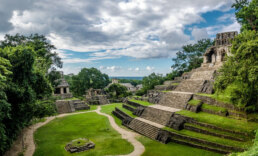
Palenque is a medium-sized site, smaller than Tikal but it contains some of the finest architecture, sculpture, roof comb and relief carvings that the Mayas produced. Much of the history of Palenque has been reconstructed from reading the hieroglyphic inscriptions on the many monuments; historians now have a long sequence of the ruling dynasty of Palenque in the 5th century and extensive knowledge of the city-state’s rivalry with other states such as Calakmul and Toniná. The most famous ruler of Palenque was K’inich Janaab Pakal, or Pacal the Great, whose tomb has been found and excavated in the Temple of the Inscriptions. On the lid, as in his tomb, Pakal is positioned in an intermediary space, between the heavens—symbolized by the world tree and bird above him—and Xibalba, the Maya underworld. In addition to the remains of Pakal, precious materials such as jade, shells, pearls, and obsidians were discovered inside the sarcophagus.
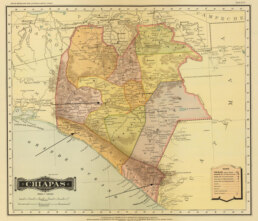
It is estimated that less than 10% of the total area of the city is explored, leaving more than a thousand structures still covered by jungle.
The first published account of this lost city was in 1567, from a Friar of the Dominican Order Pedro Lorenzo de la Nada. Lorenzo came upon its stone temples, terraces, plazas and architecture, originally decorated with blue- and red-painted stucco but by then long abandoned by the Maya who built it. Lorenzo gave the grand structure the name Palenque, a Spanish word meaning “fortification.” As drought and warfare tore apart the social and political fabric of the Maya the Spanish conquistadors began claiming Maya land for plantations and subjugating Maya people to work on them, many residents of storied stone cities such as Yaxchilan and Palenque fled to the countryside in search of a better life. Ultimately they founded a host of new Maya cultures. Some people, known as the Lacandon Maya, established themselves in the forests around Lake Mensabak in the southern Mexican state of Chiapas. Their descendants still live in this region today. They are the Hach Winik, “the true people” in Yucatec Mayan.
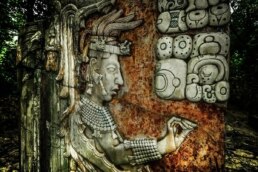
The rulers of Palenque were called the “Holy Lord of Toktahn” or “Holy Lord of Baakal”, and among the king list are several legendary leaders, including Snake Spine and Ch’a Ruler I. The very first named ruler of Palenque is GI, the First Father, said to have been born 3122 BCE, and the Ancestral Goddess said to have been born 3121 BCE.
The dynastic rulers of Palenque begin with Bahlum-Kuk or K’uk Balahm, the Quetzal Jaguar, who took the throne of Palenque in 431 AD.
Lengthy Mayan texts, which researchers have used to translate Maya script.
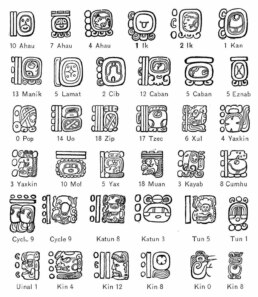
16th century
The quest to decipher Maya hieroglyphs began with the very Spanish invaders whose rule did so much to wipe out the ancient Maya script. Among them was the conquistador Hernando Cortes, who led massacres in Mexico but who also, some scholars believe, had the famous Dresden Codex—one of just four Maya illustrated books surviving today—shipped back to Spain. Another was Diego de Landa, a friar bent on replacing indigenous with Christian beliefs. In what amounts to a crime against the cultural heritage of humanity, Landa orchestrated the burning in 1562 of hundreds if not thousands of Maya bark-paper books, which he deemed heretical. Yet four years later, Landa wrote a manuscript about the Maya world called “Relation of the Things of Yucatan” (left). Together, this manuscript and the Dresden Codex proved essential in the later decoding of the Maya’s calendar system and their advanced understanding of astronomy and mathematics
1832
Counting
Actual decipherment began with an eccentric European genius named Constantine Rafinesque, who boasted of having dabbled in more than a dozen professions, from archeology to zoology. His insatiable thirst for knowledge had led Rafinesque to a reproduction of just five pages of the Dresden Codex, from which he was able to crack the Maya’s system of counting. In 1832, Rafinesque declared in his newsletter, the Atlantic Journal and Friend of Knowledge, that the dots and bars seen in Maya glyphs (like these at left, from the Dresden Codex) represented simple numbers—a dot equaled one and a bar five. Later findings proved him right and also revealed that the Maya even had a symbol for zero, which appeared on Mesoamerican carvings as early as 36 B.C. (Zero didn’t appear in Western Europe until the 12th century.)
1881
Photo documentation
Britain’s Alfred Maudslay was a respected diplomat, but he would be best remembered for his work as an amateur Mayanist. Fascinated by scholars’ writings on the Maya and by new advancements in photography, Maudslay set out to create as complete a record as possible of the civilization’s architecture and art. Using a large-format, glass-plate camera, he captured highly detailed images of Maya sites, including clear close-ups of the glyphs (left). He also prepared papier-mâché casts of several carvings from which accurate drawings were later made. Maudslay had effectively given Maya studies its first systematic corpus, or body, of inscriptions. This helped make further decipherments possible, in part by bringing glyphs to scholars who had limited access to the few surviving Maya texts.
1952
The sounds of the glyphs
While glyph studies languished in the West, a Russian linguist in Moscow was making his own groundbreaking discoveries. In 1952, Yuri Knorosov (left) postulated that the individual symbols in Maya glyphs stood for phonetic sounds, much like English letters do. Knorosov knew that Maya had too many glyphs to be a true alphabet but too few for each glyph to symbolize an entire word. (Maya’s 800-plus glyphs compare to the several thousand characters of Chinese, for example.) He determined that written Maya, like Egyptian hieroglyphics, contained a combination of these elements. Because “west,” in spoken Maya, is “chik’in,” and “k’in” is the word for sun, the hand represents the syllable “chi,” as Knorosov concluded. Fortunately, American scholars Michael and Sophie Coe began publishing Knorosov’s papers in the U.S. in the late 1950s. Otherwise, his important (though incomplete) findings might have been inaccessible to Western scholars until the end of the Cold War.
Tombraiders
Scientific debt is owned to the famed Mexican archaeologist Alberto Lhuillier, who in 1952 removed a stone inside the Temple of Inscriptions and found the burial tomb of Pakal the Great. This has since become one of the most extensively studied archaeological sites in the Americas.
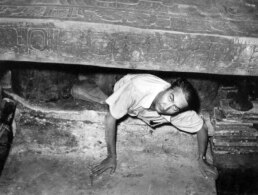
How to get there
Leave your vessel at Marina Chiapas on the Pacific coast ( entry and exit in Puerto Madero South Western Mexico) and drive to this site with a shared guided tour – or if you are adventurous drive yourself though Zapatista territory. Although the EZLN is still active and maintains a few strongholds in Chiapas, things are relatively peaceful and there is no threat to tourists. Travelers are advised to respect any roadblocks they may come across in rural areas which may require payment of an unofficial road tax. Get to the site early int he day before most day tourist show up and head to the Museum at mid day to avoid the crowds and chachki vendors inside the park which amass around 11 AM.
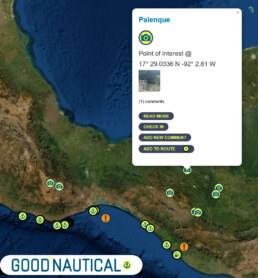
OCEAN POSSE SPONSORS
DELTA MIKE MARINE SUPPLY 🇵🇦 PANAMA SPONSORS THE OCEAN POSSE
OCEAN POSSE SPONSORS
- ABERNATHY – PANAMA
- BELIZE TOURISM BOARD
- BOAT HOW TO
- CABRALES BOAT YARD
- CENTENARIO CONSULTING – PANAMA CANAL
- CHRIS PARKER – MARINE WEATHER CENTER
- DELTA MIKE MARINE SUPPLY PANAMA
- DIGITAL YACHT
- DOWNWIND MARINE
- EL JOBO DIST. COSTA RICA
- FLOR DE CAÑA
- HAKIM MARINA AND BOAT YARD
- HERTZ RENTAL CARS MEXICO
- HOME DEPOT PRO MEXICO
- LATITUDES AND ATTITUDES
- MARINA PAPAGAYO
- NOVAMAR YACHT INSURANCE
- PANAMA YACHT BROKER
- PREDICT WIND
- SAFE HARBOR SOUTH BAY MARINA EVENT CENTER
- SAN DIEGO MARINE EXCHANGE
- SAFETY ONBOARD COSTA RICA
- SEVENSTAR YACHT TRANSPORT
- SHAFT SHARK
- SUN POWERED YACHTS
- WESTMARINE PRO
- YACHT AGENTS GALAPAGOS
OUR 📻 New Media Partner: Dockside Live Radio
We’re pleased to welcome Dockside Live Radio as an official media partner of the Ocean Posse Fleet.
Led by lifelong boater Brian Burns, Dockside Live brings music, stories, and conversations from the waterfront directly to the airwaves. Brian grew up on the lakes of Wisconsin and later sailed a 28’ O’Day before dedicating himself fully to radio. His program reaches boaters across the U.S. and beyond — with the motto:
“Where the music meets the water…”
Stay tuned — LISTEN at DockSideLive.com or download from your favorite App Store.
📡 Dockside Live Radio >>>
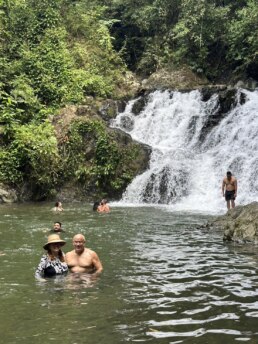
OCEAN POSSE FLEET 🛰️ TRACKING
SPONSORED BY PREDICT WIND
MARINA SPONSORS
🇦🇺 AUSTRALIA
🇧🇸 BAHAMAS
-
 Browns Marina
Browns Marina -
 Elizabeth on the Bay Marina
Elizabeth on the Bay Marina -
 Blue Marlin Cove Resort & Marina
Blue Marlin Cove Resort & Marina -
 Great Harbour Cay Marina
Great Harbour Cay Marina -
 Romora Bay Resort and Marina
Romora Bay Resort and Marina
🇧🇿 BELIZE
🇧🇲 BERMUDA
🇧🇷 BRAZIL
 Stella Marina
Stella Marina  Recife Marina
Recife Marina  Pier 26 Marina
Pier 26 Marina
 Marina da Gloria
Marina da Gloria Marina da Gloria
Marina da Gloria Marina Bracuhy
Marina Bracuhy Marina Piratas
Marina Piratas
🇻🇬 BRITISH VIRGIN ISLANDS
🇨🇻 CAPE VERDE
🇰🇾 CAYMAN ISLANDS
🇨🇱 CHILE
🇨🇴 COLOMBIA – Caribbean
-
 Club Nautico Cartagena
Club Nautico Cartagena -
 Club de Pesca Marina Cartagena
Club de Pesca Marina Cartagena -
 Marina Puerto Velero
Marina Puerto Velero -
 IGY Marina Santa Marta
IGY Marina Santa Marta  Manzanillo Marina Club
Manzanillo Marina Club
🇨🇷 COSTA RICA – Pacific Coast
🇨🇺 CUBA
🇩🇲 DOMINICA
🇩🇴 DOMINICAN REPUBLIC
🇪🇨 ECUADOR
🇸🇻 EL SALVADOR
🇬🇮 GIBRALTAR
🇬🇩 GRENADA
🇬🇵 GUADELOUPE
🇬🇹 GUATEMALA – Pacific Coast
🇬🇹 GUATEMALA Rio Dulce
🇫🇯 FIJI
 Copra Shed Marina
Copra Shed Marina Nawi Island Marina
Nawi Island Marina  Denarau Marina
Denarau Marina-
 Musket Cove
Musket Cove  Royal Suva Yacht Club
Royal Suva Yacht Club Sau Bay Moorings
Sau Bay Moorings
🇭🇳 HONDURAS – Bay of Islands – Roatan
🇮🇹 ITALY
 Marina dei Presidi
Marina dei Presidi  Marina di Balestrate
Marina di Balestrate Marina di Brindisi
Marina di Brindisi Marina di Cagliari
Marina di Cagliari Marina di Chiavari
Marina di Chiavari Marina di Forio
Marina di Forio  Marina di Teulada
Marina di Teulada -
 Marina di Policoro
Marina di Policoro -
 Marina di Vieste
Marina di Vieste -
 Marina de Procida
Marina de Procida -
 Marina de Villasimius
Marina de Villasimius -
 Marina di Vieste
Marina di Vieste -
 Marina Molo Vecchio
Marina Molo Vecchio  Marina Salina
Marina Salina  Venezia Certosa Marina
Venezia Certosa Marina
🇯🇲 JAMAICA
🇲🇶 MARTINQUE
🇲🇽 MEXICO – Caribbean
- Marina Makax – Isla Mujeres
- Marina Puerto Aventuras
- Marina V&V – Quintana Roo
- Marina El Cid – Cancún
🇲🇽 MEXICO – Pacific Coast
- ECV Marina – Ensenada BC
- IGY Marina Cabo San Lucas BCS
- Marina Palmira Topolobampo – SI
- Marina y Club de Yates Isla Cortes – SI
- Marina el Cid – Mazatlan – SI
- Marina Vallarta, Puerto Vallarta – JA
- Marina Puerto de La Navidad – Barra de Navidad – CL
- Marina Ixtapa, Ixtapa – GE
- La Marina Acapulco, Acapulco – GE
- Vicente’s Moorings, Acapulco – GE
- Marina Chiapas – CS
🇳🇿 NEW ZEALAND
🇳🇮 NICARAGUA – Pacific Coast
🇳🇺 NIUE
🇵🇦 PANAMA – Pacific Coast
🇵🇦 PANAMA – Caribbean
- Shelter Bay Marina
- Bocas Marina
- Solarte Marina
- Linton Bay Marina /a>
- Turtle Cay Marina
- IGY Red Frog Marina
🇵🇹 PORTUGAL
🇵🇷 PUERTO RICO
🇱🇨 SAINT LUCIA
🇸🇽 SINT MAARTEN
🇪🇸 SPAIN
 Alcaidesa Marina
Alcaidesa Marina  IGY Málaga Marina
IGY Málaga Marina  Marina Del Odiel
Marina Del Odiel  Nautica Tarragona
Nautica Tarragona  Puerto Sotogrande
Puerto Sotogrande Yacht Port Cartagena
Yacht Port Cartagena
🇰🇳 ST KITTS & NEVIS
🇹🇳 TUNISIA
🇹🇴 TONGA
🇹🇨 TURCS AND CAICOS
🇻🇮 US VIRGIN ISLANDS
🇺🇸 USA – East Coast
- Safe Harbor – Marathon, FL
- Pier 66 Hotel & Marina – Ft. Lauderdale, FL
- Titusville Marina – FL
- Port 32 Marina Jacksonville – FL
- Oasis Marinas at Fernandina Harbor Marina – FL
- Morningstar Marinas Golden Isles St. Simons Isl. – GA
- Windmill Harbour Marina – Hilton Head , SC
- Coffee Bluff Marina – Savannah GA
- Hazzard Marine – Gerogetown, NC
- Holden Beach – Town Dock, NC
- Tideawater Yacht Marina, Portsmouth, VA
- Ocean Yacht Marina, Portsmouth, VA
- York River Yacht Haven – VA
- Yorktown Riverwalk Landing – VA
- Regatta Point Marina – Deltaville, VA
- Regent Point Marina – Topping, VA
🇺🇸 USA – Pacific Coast
🇻🇺 VANUATU
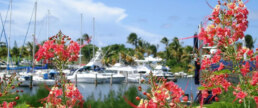
OCEAN POSSE PANAMA 🇵🇦 CANAL AGENTS
info@centenarioconsulting.com
www.centenarioconsulting.com
Cellphone +507 6676-1376
WhatsApp +507 6676-1376
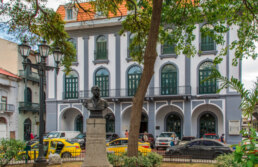
Tucked in the heart of Panama City’s Casco Antiguo, the Panama Canal Museum is more than just a building filled with artifacts, it is a living chronicle of one of the greatest feats of maritime engineering. Housed in a stately colonial structure dating back to 1874, the museum occupies what was once the headquarters of the French canal company. From this very place, early visions of a sea-to-sea passage began to take shape, eventually culminating in the canal that redefined global shipping and ocean voyaging.
For visiting sailors and adventurers, the museum offers a rare opportunity to step ashore and absorb the full scale of the waterway’s history. Exhibits span from the 16th century, when Spanish navigators first dreamed of a shortcut between oceans, to the French effort under Ferdinand de Lesseps, to the eventual triumph of the U.S.-led construction and Panama’s stewardship after 1999.
Inside, carefully curated displays bring the canal’s story to life. Nautical maps, surveying tools, ship models, and archival photographs illustrate the enormity of the undertaking. A highlight for mariners is the section devoted to the mechanics of the locks – complete with scale models that show how ships are raised and lowered through the Gatun, Pedro Miguel, and Miraflores locks. Standing before these displays, one gains a deeper appreciation for the precision that makes each transit possible.
Equally compelling is the human story. The museum honors the thousands of workers, many of them from the Caribbean and beyond, who labored under grueling conditions to carve the canal through the Isthmus. Their sacrifices, alongside breakthroughs in tropical medicine and engineering, remind every seafarer that the canal is not only a passage for ships but also a monument to endurance and innovation.
The museum also provides a window into Panama’s modern role as guardian of this global crossroads. Interactive exhibits explain the 1977 Torrijos–Carter Treaties, the handover of canal operations in 1999, and Panama’s ongoing investment in its expansion, including the third-lane locks inaugurated in 2016. For yacht captains plotting their own transit, these insights add context to the procedures and fees encountered at Balboa or Colón.
Beyond the exhibits, the museum’s location in Casco Antiguo makes it a destination in itself. After an afternoon inside, sailors can step out onto cobbled streets lined with cafés, plazas, and colonial facades overlooking the Pacific. It is a fitting reminder that the canal is not just a passageway of steel and water, but a cultural artery linking continents and peoples.
For Ocean Posse crews and all who answer the call of the sea, a visit to the Panama Canal Museum is a rite of passage. It anchors the modern transit experience in centuries of maritime dreams and toil. Standing amid its galleries, one feels the weight of history – and the thrill of joining a line of navigators stretching from Balboa to today’s circumnavigators.
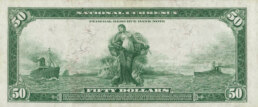
 Tidbits
Tidbits
OCEAN POSSE SAILING VESSEL PAWPAW IS FOR SALE

MEXICAN T.I.P.
An uncancelled Mexican TIP (Temporary Import Permit) tied to a non mexican vessel is a common and sometimes messy issue. Since TIPs are issued to both the vessel and the owner, if a prior owner failed to cancel it when leaving Mexico, the boat will still appear as “in Mexico” in Banjercito’s system. Here’s what you can do:
1. Confirm the TIP status
Contact Banjercito (the issuing authority) with the vessel’s HIN, documentation/registration number, and old TIP number (if available).
They can verify whether the TIP is still active.
2. If the prior owner is reachable
Ask them to formally cancel it.
Cancellation normally requires showing the vessel at a Mexican port of entry, but sometimes Banjercito will accept:
A notarized letter from the prior owner requesting cancellation.
Copies of the original TIP, proof of sale, and current registration.
This is the cleanest and fastest path.
3. If the prior owner is not cooperative or unavailable
You’ll need to apply for cancellation through Mexican Customs (SAT/Aduana):
Provide your bill of sale or proof of ownership transfer.
Show that the vessel is currently in the U.S. (photos, marina invoice, or Coast Guard documentation with U.S. location).
Submit a request to SAT for TIP cancellation due to change of ownership outside Mexico.
Often this requires help from a Mexican maritime agent who knows the local Aduana office.
4. If you bring the vessel back to Mexico without clearing it up
You risk being denied entry, fined, or in worst cases having the boat impounded until the matter is resolved.
Clearing this up before re-entry is strongly advised.
Contact Eco Naviera who for a fee will try to help you
5. Practical path forward
Step 1: Email or call Banjercito (they have English speakers) with vessel details.
Step 2: If they confirm the TIP is active, try to get the prior owner to cancel it.
Step 3: If not possible, prepare documentation (bill of sale, U.S. registration, photos of vessel outside Mexico) and work with a Mexican agent to file a cancellation request with SAT/Aduana.
⚓ Tip from cruisers:
Sometimes a new TIP will be denied until the old one is cleared. Starting the cancellation process before sailing south saves weeks of delay and headaches

Got a report, scoop, story, picture, subject or contact at a marina who wishes to work with us ? Please get in touch with us.
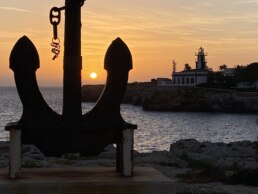
Extraordinary Cruising °°° Join the Fleet
- Access vetted local knowledge, safety resources, and prior experiences to make your passage safer and more enjoyable.
- Unlock a Life of Adventure
Explore hidden destinations, experience new cultures, and discover the freedom of life at sea or near shore – on your terms. - Get VIP Perks & Discounts at marinas, chandleries and boatyards
Get exclusive discounts, priority access, and personalized support at partner marinas across the globe. - Observe the actions of Experienced Captains
Tap into a wealth of tips, tools, and real-world know-how from seasoned mariners to grow your skills and gain confidence. - Make Every Nautical Mile Memorable
Join events, meetups, and shared journeys that turn you voyages into unforgettable stories and lasting memories. - Cruise with a Conscience
Gain insights into sustainable practices and join a movement that protects the waters you love to explore.



